
Love history? Here are the 80 most famous landmarks you have to know. These recognizable natural or artificial sites have long been used as useful tools of navigation and have stood out of their surrounding environment for a variety of reasons. Be it a prehistoric archaeological site, a dormant volcano, or an opulent manmade palace, these destinations are lionized throughout the world and share one common attribute – an interesting backstory!
Atacama Desert
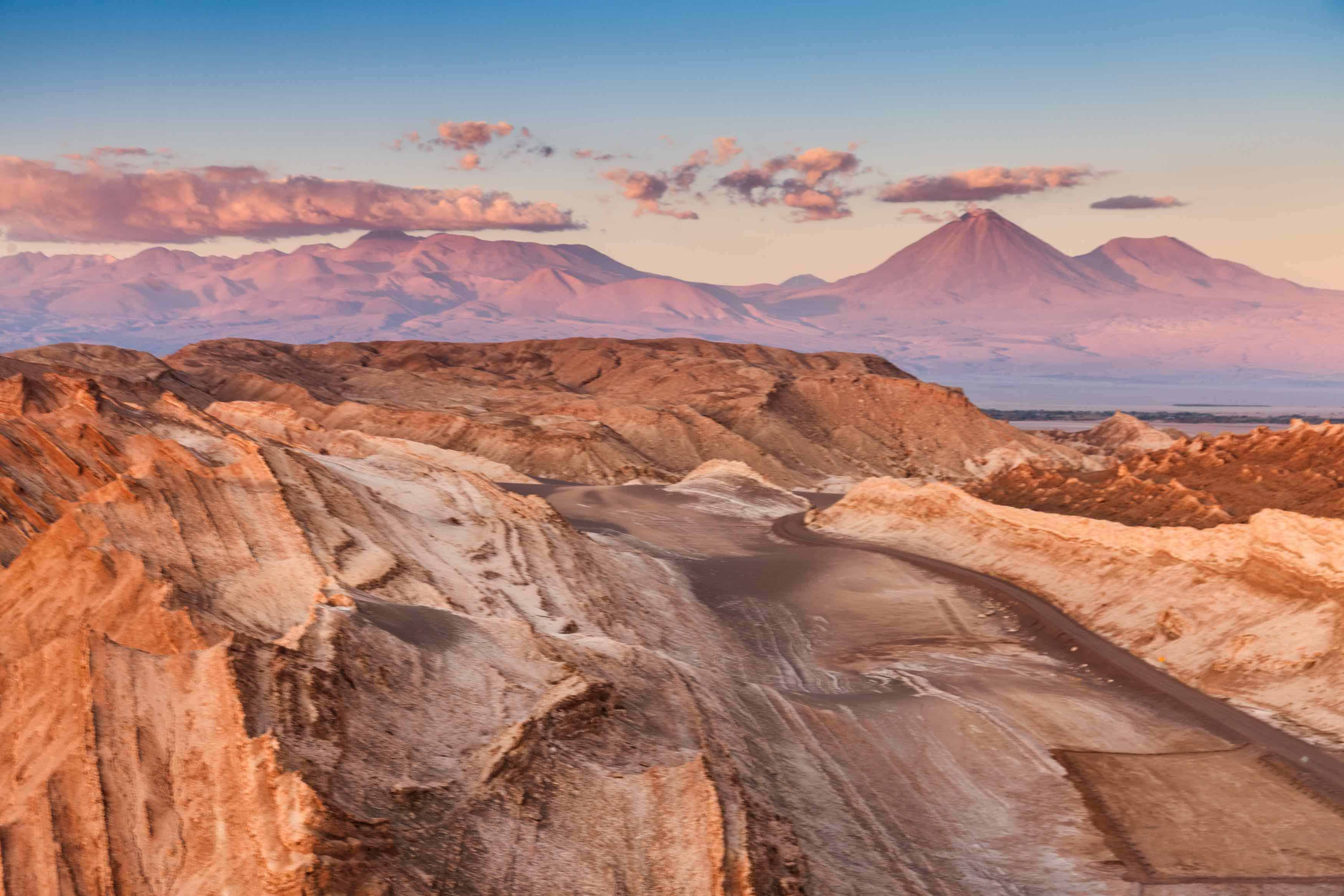
The Atacama Desert is an area of desert highland in South America. This region which spans 1,600 km along the Pacific coast, is home to a slew of forsaken mining towns still reminiscing the boom of sodium nitrate mining in the 1940s. Manufacturers use this chemical to produce fertilizers and explosives, amongst other things.
Dead Sea
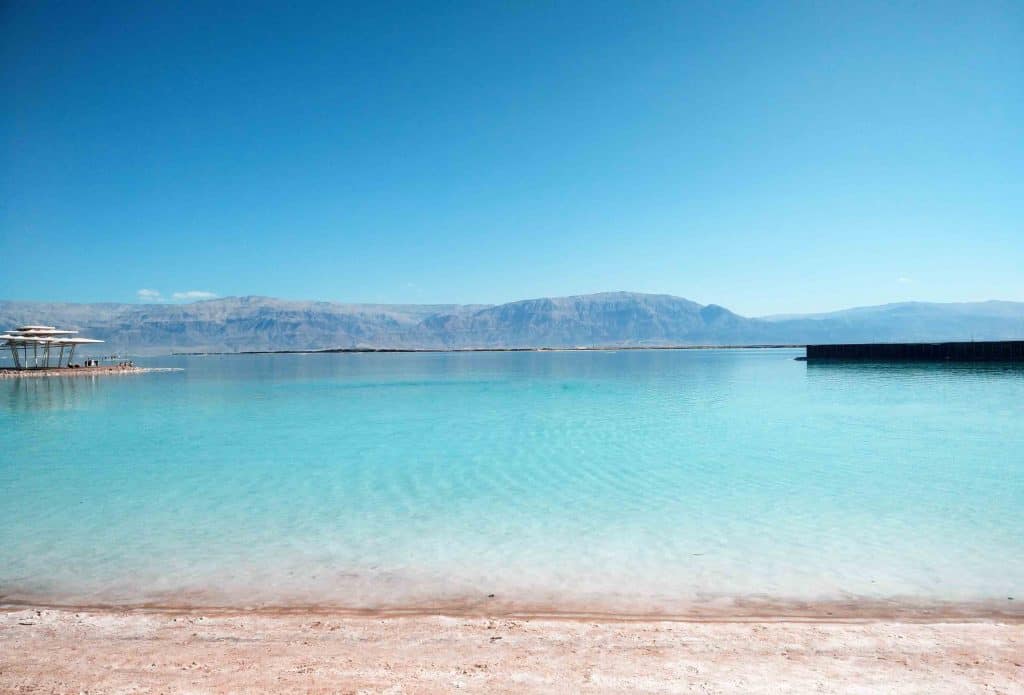
The Dead Sea is a salt lake edging alongside Jordan, Israel, and the West Bank. Stretching along the Jordan Rift Valley, with the Jordan River serving as its main tributary, this lake boasts a surface of 430.5 meters below sea level, making its shores the lowest land-based elevation on Earth. The upper 35 meters of its sea has a salinity level of 30%, which steadily rises with depth. At its lowest levels, the Dead Sea is extremely concentrated with salt. This concentration is so high that the particles begin to crystallize on the seabed, forming sheets and blocks of salt on top of the rock.
Empire State Building

The Empire State Building is the pride and joy of Midtown Manhattan in New York City. This landmark was constructed from 1930 to 1931. Complete with a name that represents an ode to the state of New York, the Empire State Building was lionized for holding the title of the World’s Tallest Skyscraper from 1931 to 1970. It has now, however, been dethroned by the World Trade Center.
Lake of Loch Ness
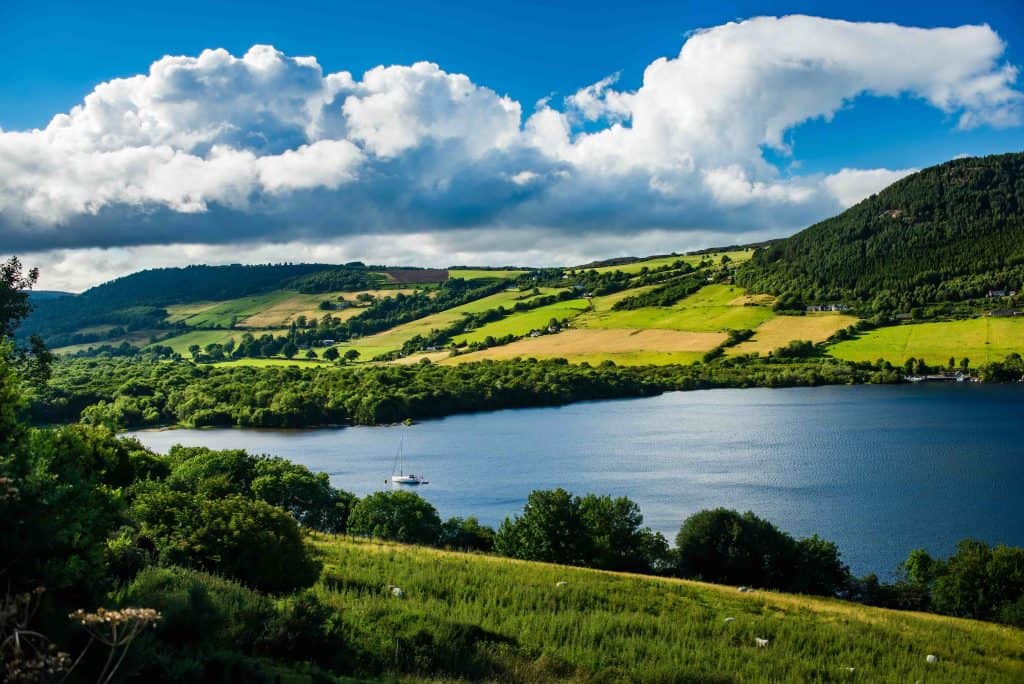
The Lake of Loch Ness is a large, deep, freshwater loch in the Scottish Highlands, which extends approximately 37 km southwest of Inverness. With a surface measuring 16 meters above sea level, this lake is infamous for alleged sightings of the cryptozoological Loch Ness Monster.
Of the innumerable alleged sightings, only one witness, Robert Wilson, a surgeon from London, successfully captured his experience on camera in 1934. In his recount, the surgeon claimed to have seen the monster whilst looking at the lake and managed to take 4 pictures before it disappeared. Upon further inspection, only image 2 showed the monster, with the first becoming known as the ‘Surgeons’ Photograph’. From the image, viewers have a clear view of the monster’s neck and back as it swims away, leaving nothing but the water rippling.
Bermuda Triangle

The Bermuda Triangle is a vaguely defined perimeter at sea. This mysterious location lies in the western part of the North Atlantic Ocean. Several aircraft and ships are believed to have disappeared there under mysterious circumstances.
Plagued by a history of swallowing up innumerable weary travelers while leaving behind no evidence for decades, many believe that the stories of these mysterious events first began with Italian colonizer Christopher Columbus. Based on his accounts, on October 8, 1492, Columbus looked at his compass. He noticed unusual readings, which no longer pointed toward the magnetic north, a point on the Earth’s surface where its magnetic field points directly downwards.
Hoover Dam

The Hoover Dam is a concrete arch-gravity dam. It is located in Black Canyon along the Colorado River and was constructed between 1931 and 1936 during the Great Depression. The Hoover Dam was a joint venture between construction companies known as “Six Companies.” Due to the immense size of the dam, no single contractor had sufficient funds to qualify for the bid, and thus, all 6 companies made a united request worth US$48,890,955 to win the contract.
Sahara Desert

The Sahara is a 9,200,000 km2 desert on the African continent. It is the largest hot desert in the world and the 3rd largest desert overall. Despite its size, the Sahara is smaller than the deserts of Antarctica and the northern Arctic.
Nile River
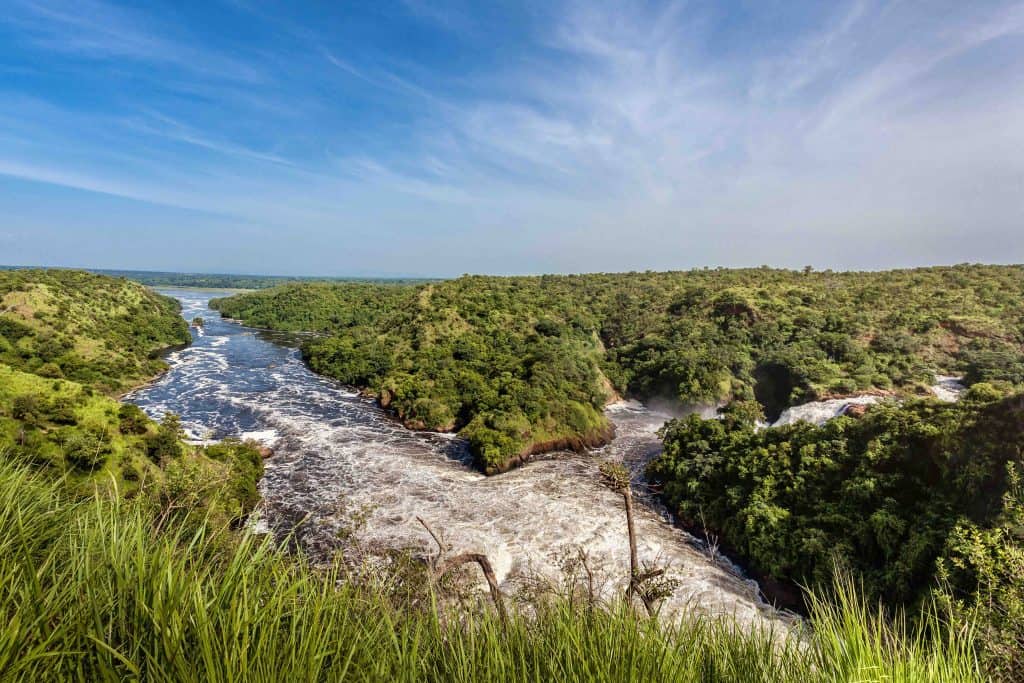
The Nile is a significant north-flowing river in northeastern Africa. It flows into the Mediterranean Sea. Deemed the longest river in Africa, the Nile runs an estimated length of 6,650 km. It was once considered as the longest river in the world. No longer holding that title, however, the Nile River now stands in 2nd place. This is because new research suggests that the Amazon River is slightly longer.
Mount Everest
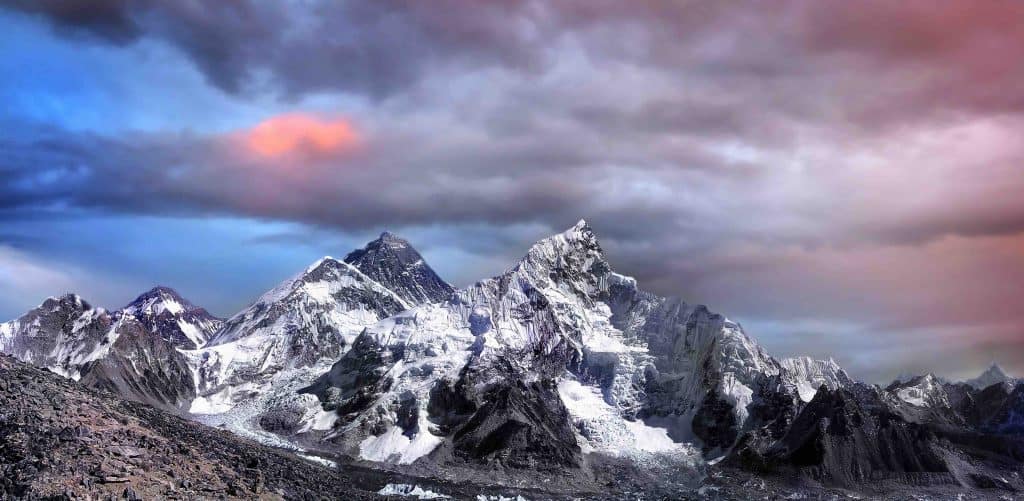
Mount Everest is Earth’s highest mountain above sea level. It is located in the Mahalangur Himal sub-range of the Himalayas. Coinciding with the China–Nepal border at its summit point, Mount Everest boasts an elevation of 8,848.86 meters. To date, at least 7,500 people have successfully reached its summit, despite temperatures reaching as little as -41°C.
Taj Mahal
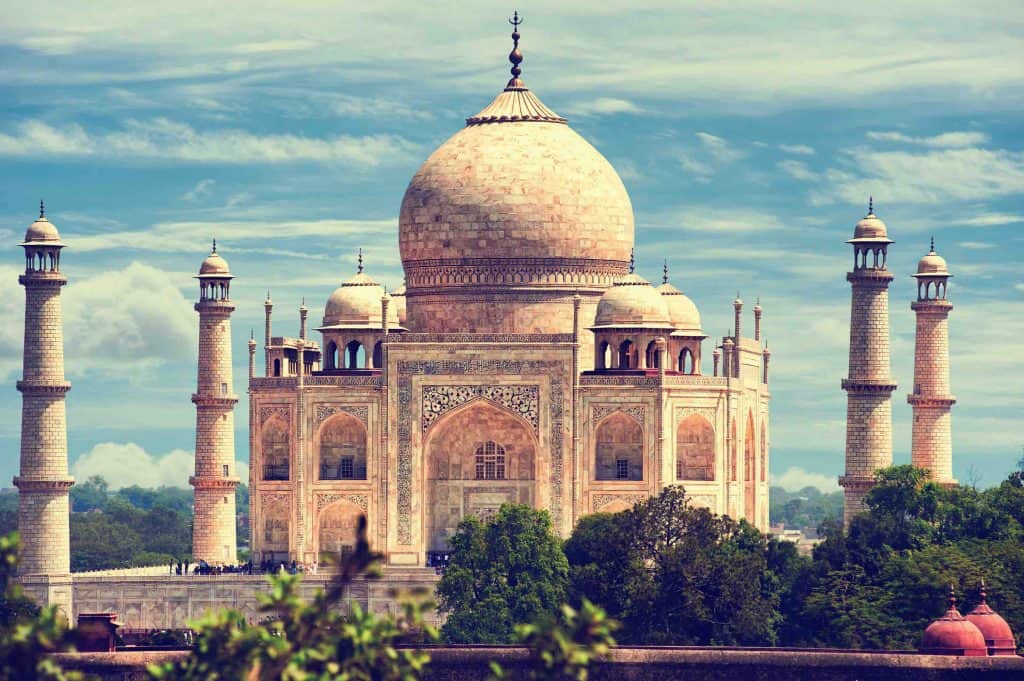
The landmark is an ivory-white marble mausoleum. It is located on the southern bank of the river Yamuna in the Indian city of Agra. First commissioned in 1632 by the Mughal emperor Shah Jahan, the Taj Mahal was constructed as a burial ground for his favorite wife, Mumtaz Mahal. In later years, it also served to house the tomb of Shah Jahan himself.
Prior to its construction, all important buildings like mosques and palaces were crafted from red sandstone. Unlike previous structures, the Taj Mahal incorporates white marble and semi-precious stones. It is therefore known for its brighter appearance and is considered the pioneer of Mughal architecture.
Sydney Opera House

The Sydney Opera House is a multi-venue performing arts center. This landmark lies along Sydney Harbour in Australia and is best known to be the 20th century’s most famous and distinctive building. The construction of the Sydney Opera House first began in 1959, employing 10,000 construction workers. Scheduled for completion within 4 years, the design for the Sydney Opera House soon proved to be more difficult to achieve than planned. After years of delay in the construction schedule, the Sydney Opera House was completed in 1973. Sixteen construction workers lost their lives during the project due to accidental falls while on the job.
Niagara Falls
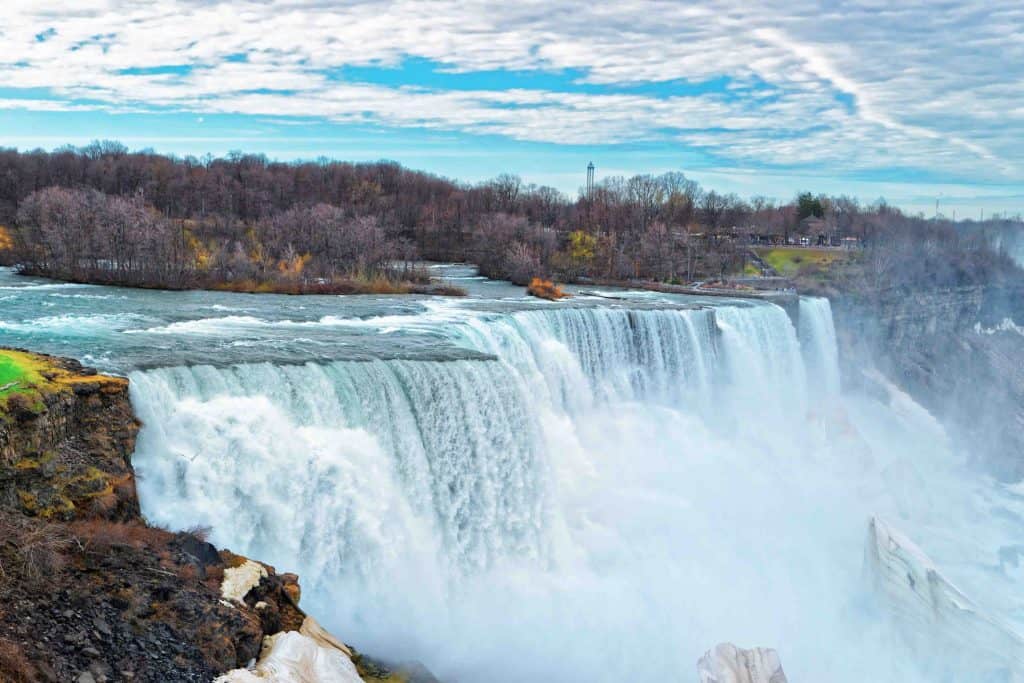
Niagara Falls is a Canadian city. This place is home to famous waterfalls of the same name. On average, the running water from Niagara Falls is so loud, it can be heard from over 45 km away and sounds equal to the volume of a lion’s roar.
Colosseum

This landmark is an oval amphitheater in the heart of the city of Rome. To this day, it is the largest ancient amphitheater ever built. Revered as an irreplicable creation, the arena first began to decay in the early 20th century. Natural disasters, coupled with vandalism, and harsh weather conditions caused it to crumble. The decorative elements that made the Colosseum special, such as the arches, posts, and marble seats for the spectators, have all since been destroyed.
Buckingham Palace
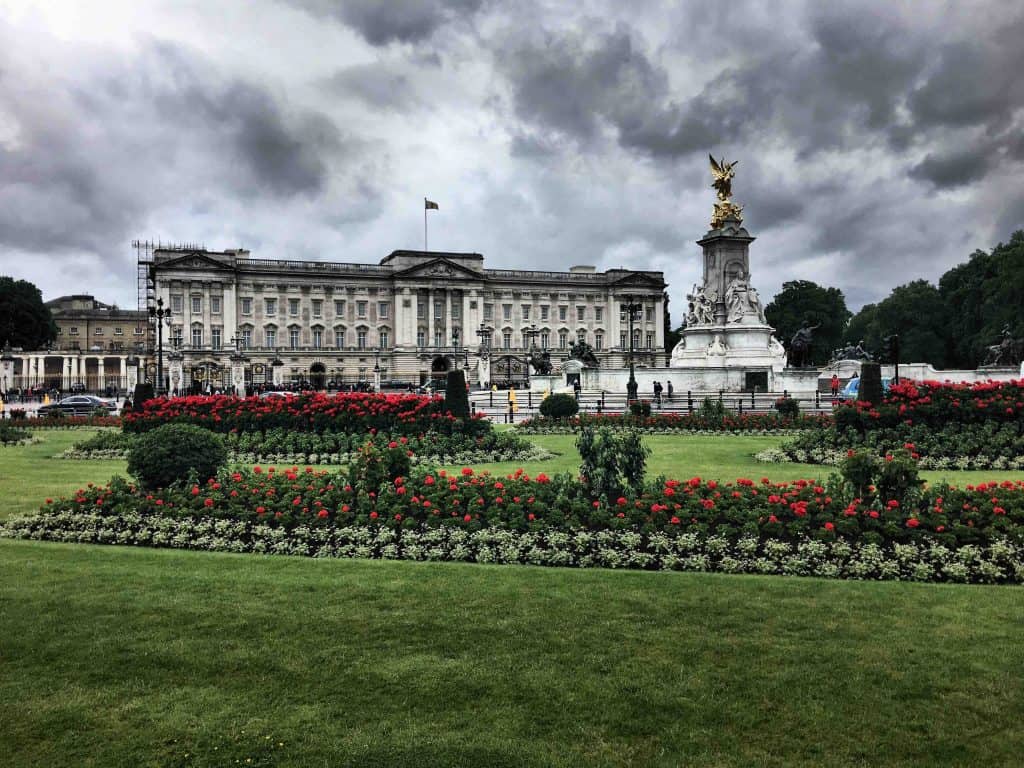
Buckingham Palace is the longstanding residence and administrative headquarters of the United Kingdom’s royal family. Located in the City of Westminster, the palace is the central focus during state occasions. The landmark is made of small spherical clumps of sedimentary rocks. These elements are formed from the mineralized remains of tiny organisms. Often found in grains of sand and grit, these elements which line Buckingham Palace’s walls are better known as tiny fossils that date as far back as an estimated 200 million years ago.
Neuschwanstein Castle
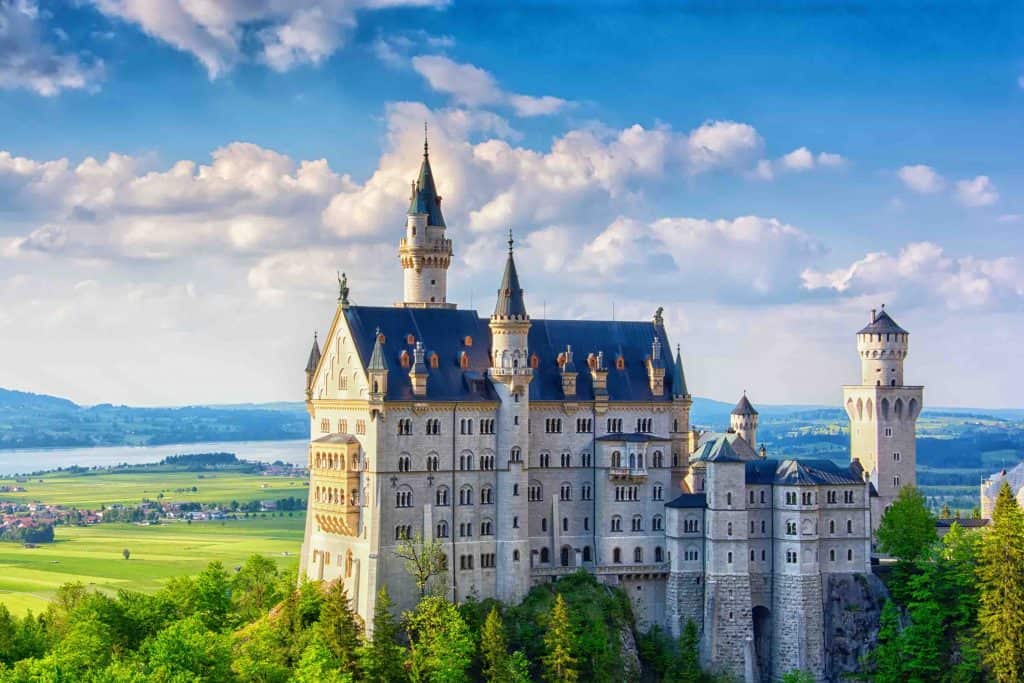
The Neuschwanstein Castle is a 19th-century palace above the village of Hohenschwangau near Füssen in southwest Bavaria, Germany. King Ludwig II of Bavaria commissioned the court as a retreat to honor German composer, Richard Wagner.
This landmark is better known as the “Castle of Fairytale King” due to King Ludwig II’s reclusive and eccentric nature. This landmark’s design is reminiscent of his childhood palace, the Hohenschwangau Castle. One of Ludwig’s many wishes for his castle was a splendid view of the mountains with an expansive courtyard. However, in 1886, the king never got to see his dream come true due to his unfortunate death.
Devils Tower
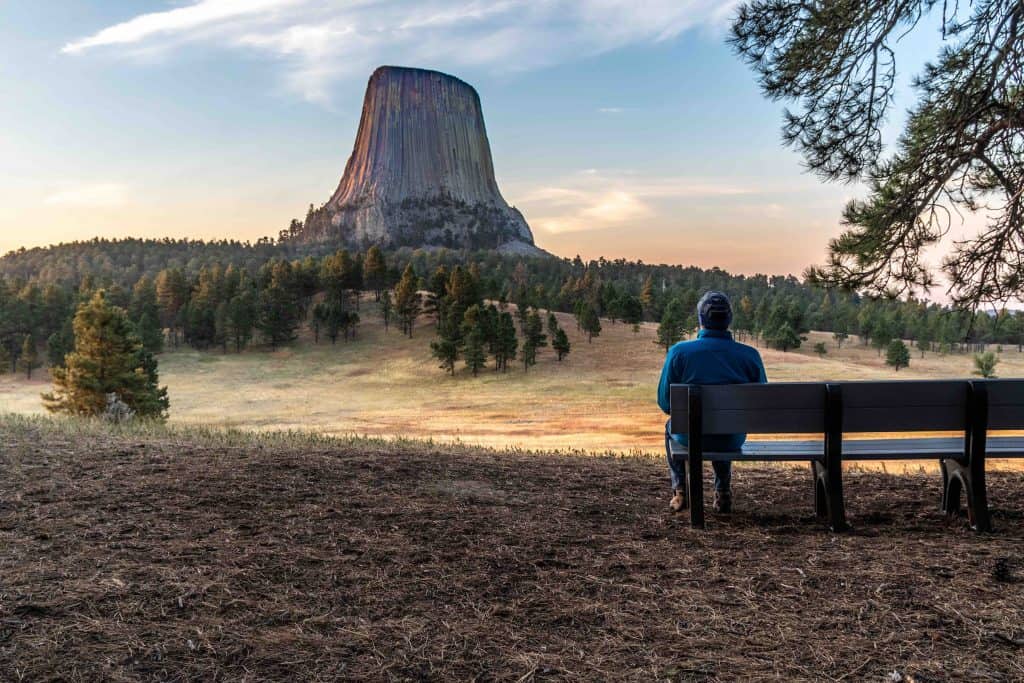
Devils Tower is a butte in the Bear Lodge Ranger District of Crook County, Wyoming. Rising 1,267 ft above the Belle Fourche River, this landmark towers 867 ft from summit to base. It is known as a sacred site for many indigenous Native American tribes. Up to this day, Native American tribes continue to hold thousand-year-old holy ceremonies in the Devil’s Tower. These ceremonies include sun dances and other communal rituals. Now that’s a few famous landmark facts worth noting!
Big Ben
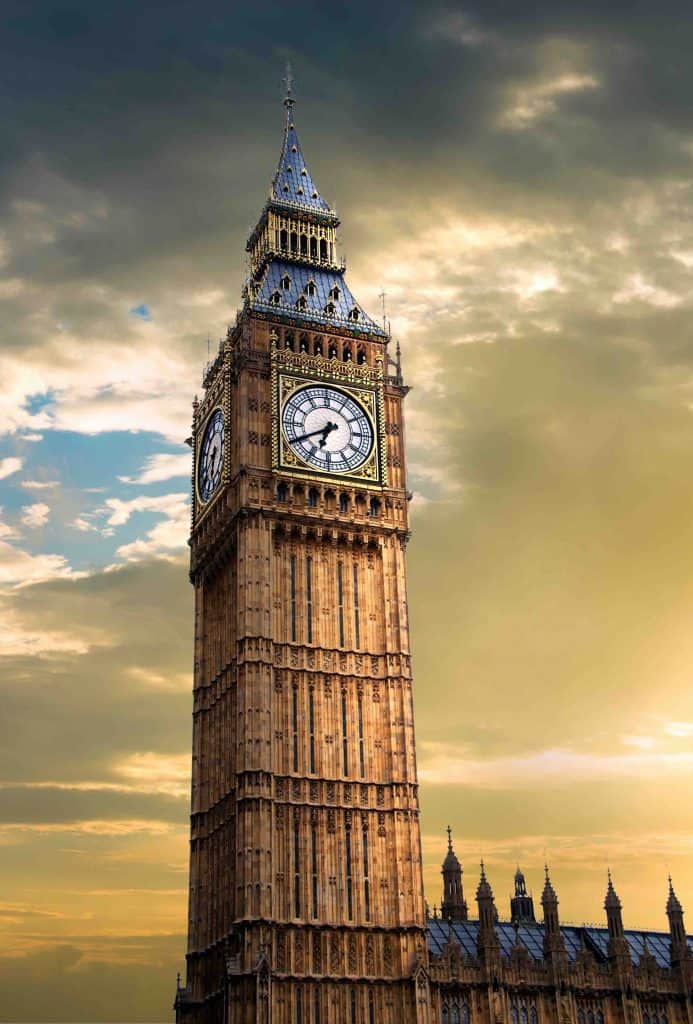
Big Ben is the largest bell among the four found in the clock tower. Despite the name being assigned to the bell itself, people also use ‘Big Ben’ to refer to the clock tower as a whole. This landmark has consistently marked each hour in London with a resounding chime since its completion in 1953. The clock went silent for the first and only time ever in 2013 to honor departed Prime Minister, Margaret Thatcher.
Nutty Putty Cave
Nutty Putty is a hydrothermal cave located in Utah County. Formerly popular amongst adventurers, the Nutty Putty Cave is also known as ‘The Maze’ due to its narrow corridors. The tightest part of the cave, known as the ‘Birth Canal,’ requires explorers to suck their stomachs in to get through. As a result, the Nutty Putty Cave can be dangerous to explore.
In the past, there were two incidents of people getting stuck in the birth canal. Moreover, the 1999 incident involved two teenage campers, while the 2001 incident involved two boy scouts. In both cases, everyone stuck was successfully rescued, but not without mild dehydration and fatigue.
Suicide Forest
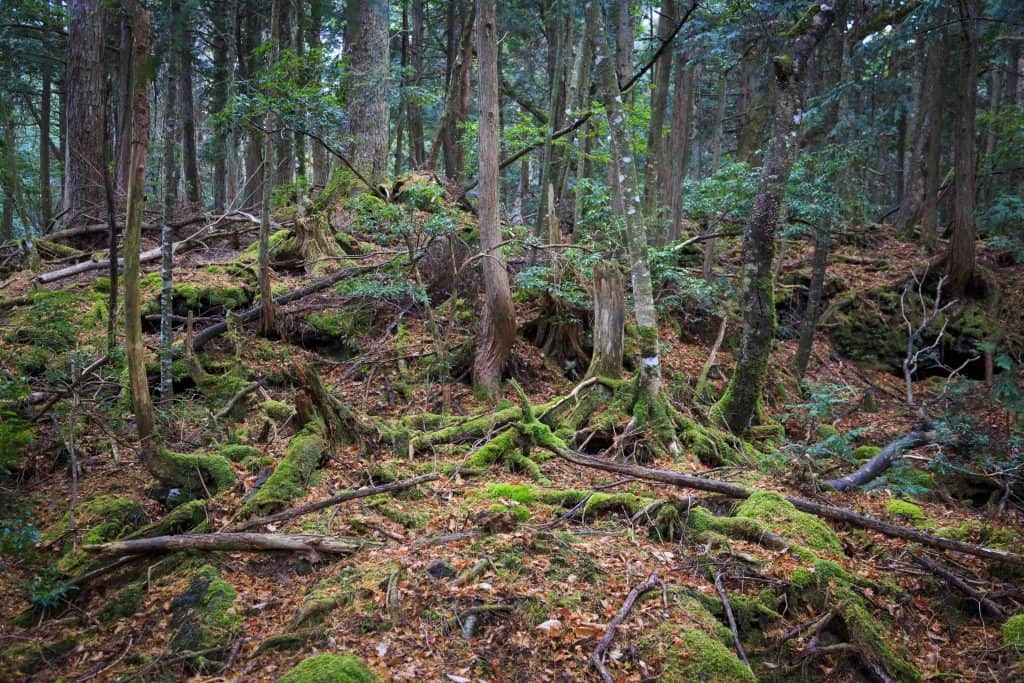
Aokigahara is also known as the Sea of Trees or the Suicide Forest. This region lies along the northwestern flank of Mount Fuji on the island of Honshu in Japan. It thrives on 30 km2 of hardened lava laid down by the volcano’s last major eruption in 864 CE.
This landmark is the world’s most popular suicide destination due to its secluded environment and innumerable trees. It amassed over 105 dead bodies in 2003, alone. In 2010, the police recorded more than 200 attempted suicide cases in the forest. Of these cases, 54 completed the act.
Eiffel Tower
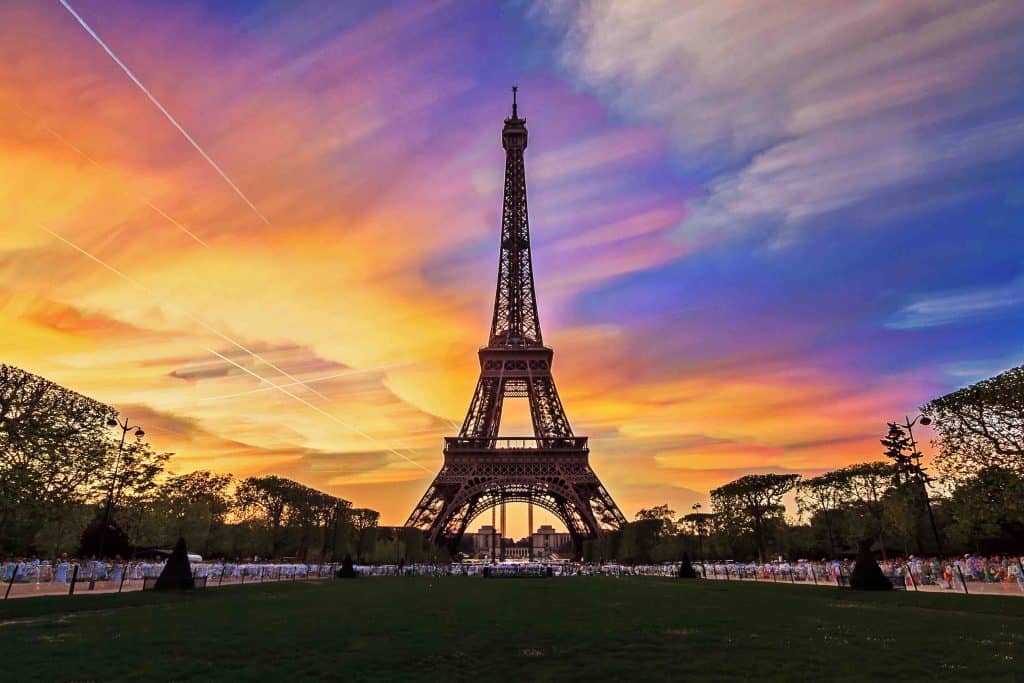
The landmark on the Champ de Mars in Paris is named after the engineer Gustave Eiffel. Many consider this site to be the most romantic spot in the City of Love. Each night, the Eiffel Tower lights up 20,000 light bulbs for 10 minutes at a time. This opulent display consumes 7.8 million kWh of electricity per year. With that much energy, one can easily power a small village.
Stonehenge
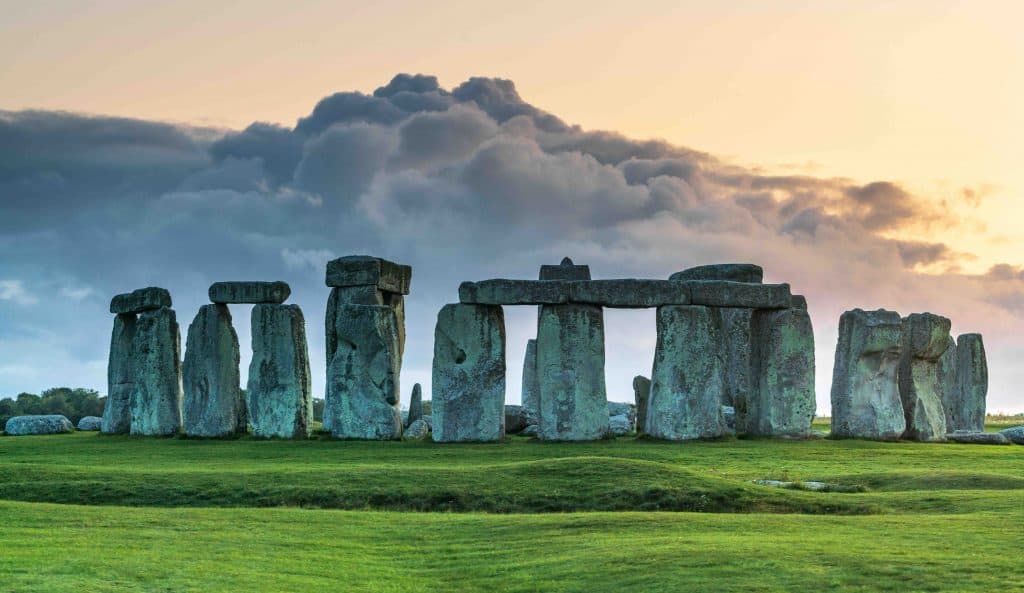
Stonehenge is a prehistoric burial ground. However, the arrangement of its pits suggests that the site had more purposes. Archaeologists hypothesize that the area’s wooden markers once formed an east-west alignment. This alignment may have a connection to the prehistoric lunar calendar, which marks certain days of the year like the solstices and equinoxes.
Pyramid of Giza
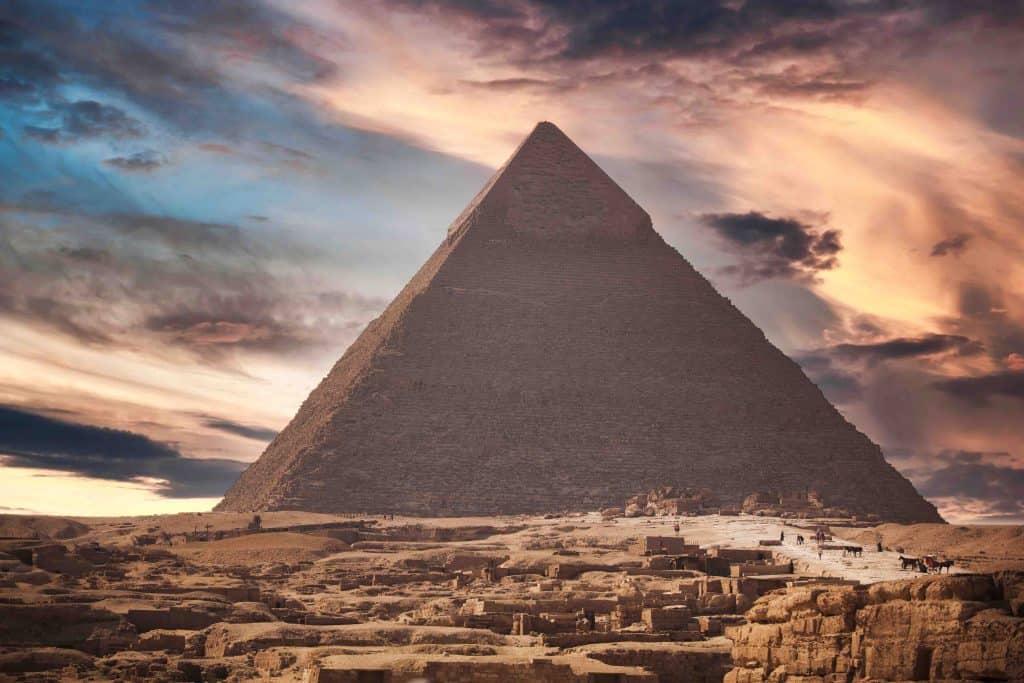
The Great Pyramid of Giza is the oldest and largest in the Giza pyramid complex. It lies along the borders of present-day Giza in Greater Cairo, Egypt. This site is the oldest of the Seven Wonders of the Ancient World. It is also the only one to remain largely intact.
Records show that the Pyramid of Giza once rose as high as 146.7 meters. In today’s measurements, that is almost 10 meters taller than it is today. Some theorize that the reduced height results from the loss of the pyramid’s gold-plated capstone – an element which some skeptics still debate whether or not it really existed.
St. Basil’s Cathedral
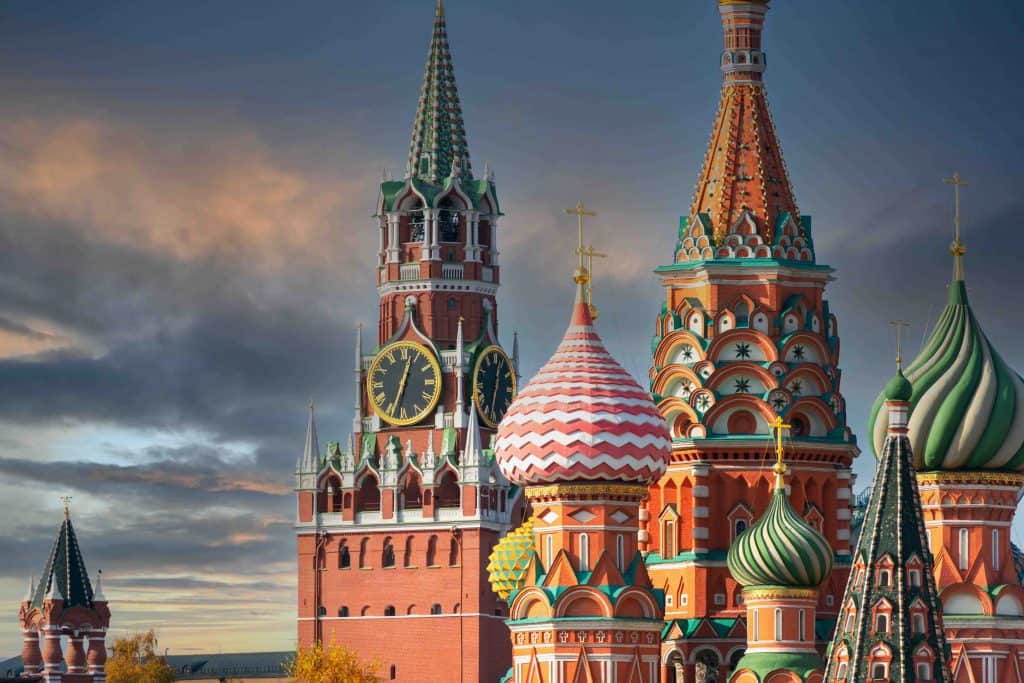
The Cathedral of Vasily the Blessed is commonly known as Saint Basil’s Cathedral. This landmark is an Orthodox church in Red Square, Moscow. It is one of the most prominent cultural symbols in Russia. Despite its completion in the 17th century, no one knew a wooden frame anchored the Cathedral until 1954. Further studies later revealed that the structure, which now sits entombed within the stonework, is a life-sized model of the Cathedral built first.
Statue of Liberty
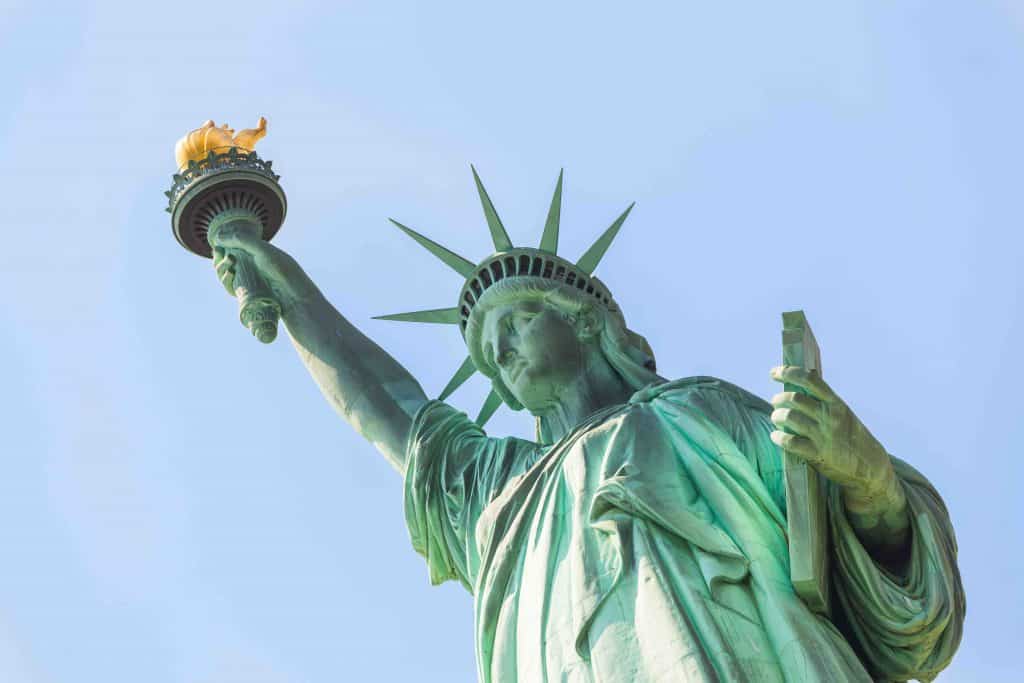
One of the most famous landmarks in the world is about none other than the Statue of Liberty. This iconic masterpiece is a colossal neoclassical sculpture on Liberty Island in New York Harbor. It weighs 225 tons. On its own, the statue’s framework can weigh up to 125 tons. This incredible weight is attributed to the statue’s outer construction, which uses a pure copper framework hung on steel.
Yellowstone National Park
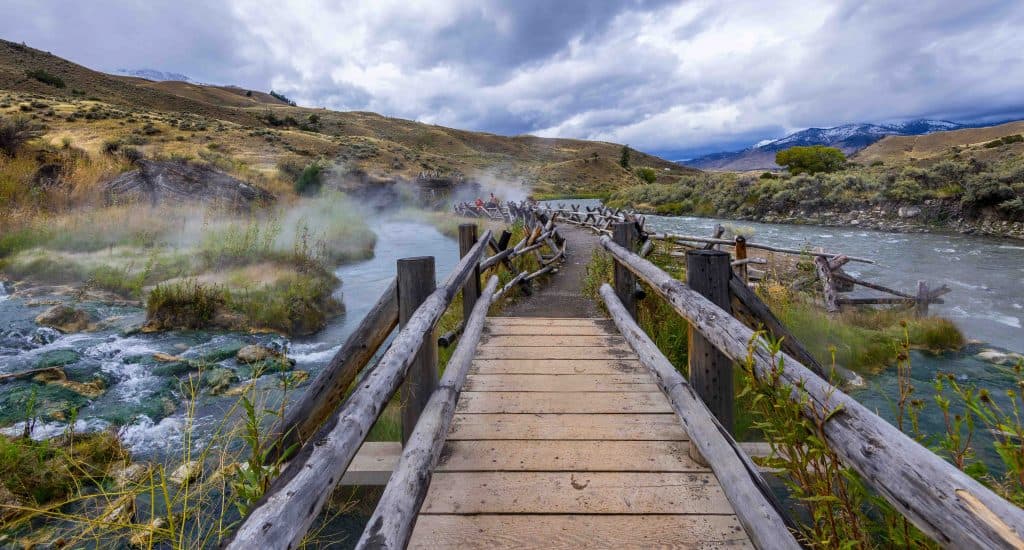
Yellowstone National Park is a 3,500 sq. mi wilderness recreation area. This area lies above a volcanic hot spot and stretches across Wyoming, into parts of Montana and Idaho. Its landscape features picturesque canyons, alpine rivers, lush forests, hot springs, and gushing geysers.
This area is also home to the world-famous Old Faithful. Towering over the biggest supervolcano in the world, Yellowstone’s last major eruption took place 640,000 years ago. This eruption is recorded to be 1000 times more powerful than Mt. Saint Helens’ 1980 outburst. This historic event released more than 1000 km³ worth of volcanic matter into the atmosphere, during which time, winds swept these particulars further up by thousands of kilometers across North America. Scientists believe this eruption may have caused several extinctions.
Grand Canyon National Park
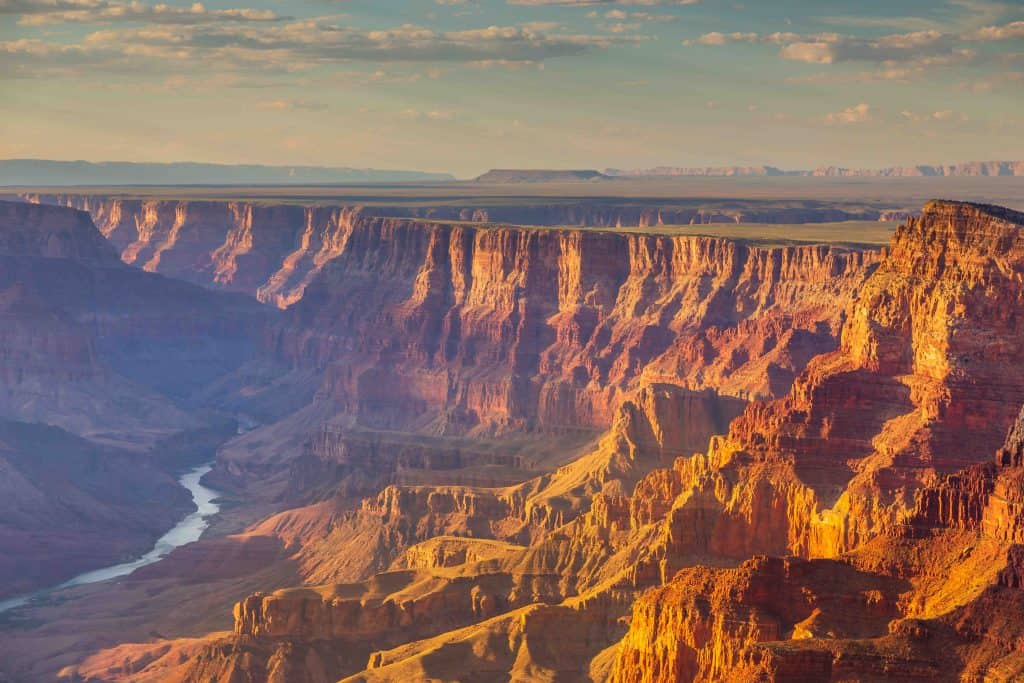
The Arizona Grand Canyon National Park, is where one will find layered bands of red rock revealing at least 70 million years of geological history. The landmark’s viewpoints include Mather Point, Yavapai Observation Station, and architect Mary Colter’s Lookout Studio, and her Desert View Watchtower.
Burj Khalifa
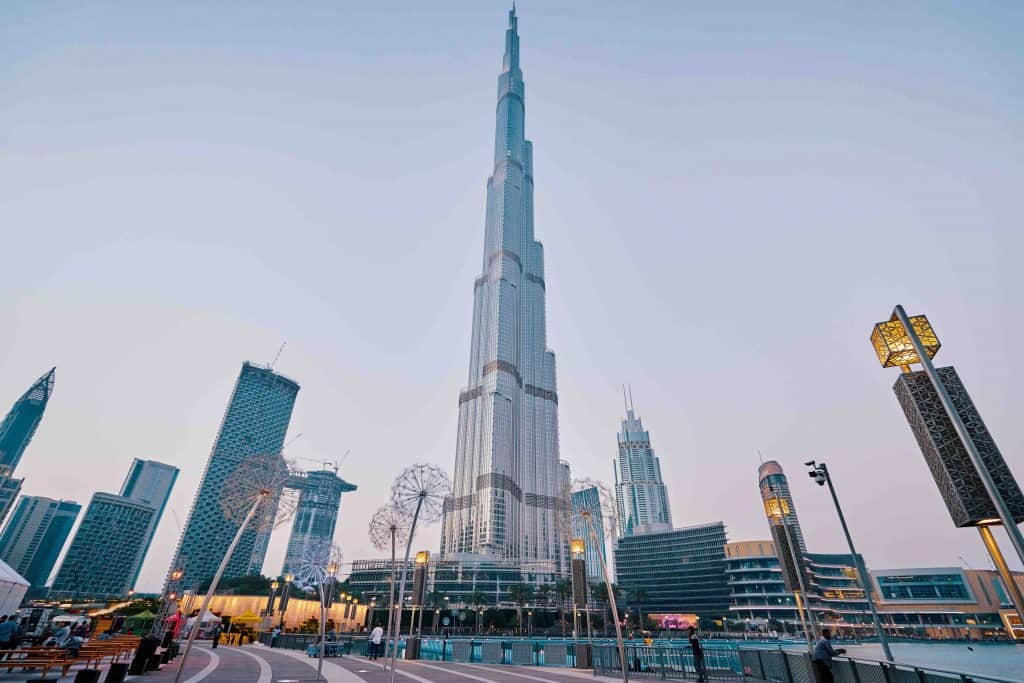
The Burj Khalifa is a skyscraper in Dubai. This landmark’s construction employed an estimated 12,000 workers per day and approximately 22 million hours of work. Due to the skyscrapers’ dramatic height, workers and others who needed to use the temporary elevators under construction had to sign safety waivers. These workers also had to undergo special training to learn how to make emergency landings if the elevators failed.
Great Wall of China

The Great Wall of China is built across the historical northern borders of Imperial China. It was constructed as protection against various nomadic groups from the Eurasian Steppe. Known as “Wanli Changcheng,” or simply “Changcheng” in Chinese, this landmark’s nickname translates to “The 10,000 Miles Long Wall”. The landmark itself was also featured in the biography of General Meng Tian who lived in the late 3rd century BC.
Golden Gate Bridge
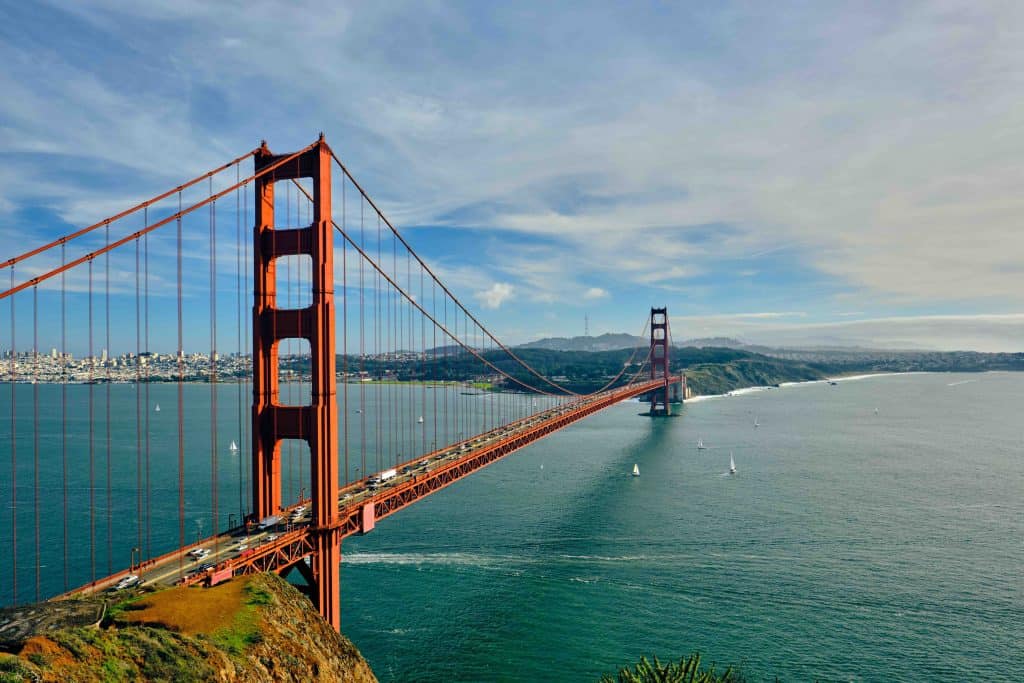
The Golden Gate Bridge is an extensive suspension bridge which connects San Francisco Bay to the Pacific Ocean. Stretching approximately 4.8 km long by 1.6 km wide, this Pacific Coast Highway carries both U.S. Route 101 and California State Route 1. The landmark even features a dedicated pedestrian walkway.
Rocky Mountains
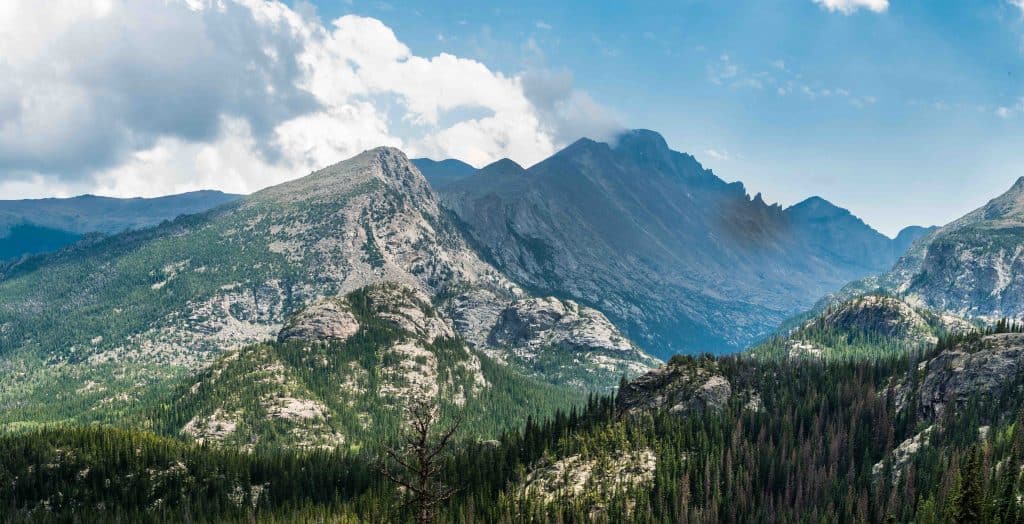
The Rocky Mountains stretch some 3,000 miles from British Columbia and Alberta in Canada through Idaho, Montana, Wyoming, Colorado, and down to New Mexico in the U.S. The range offers dramatic wilderness, diverse wildlife, and alpine lakes.
Home to a local family-run tea house that was built 7,000 ft above a valley in Lake Louise, and has served travelers since as early as the 1920s, the Rocky Mountains was once inhabited by various indigenous people such as Bannock, Cheyenne, Apache, Shoshone, Flathead, Sioux, Ute, Arapaho, Blackfoot, Kalispel, Crow people, Kutenai, and Coeur d’Alene.
Appalachian Mountains
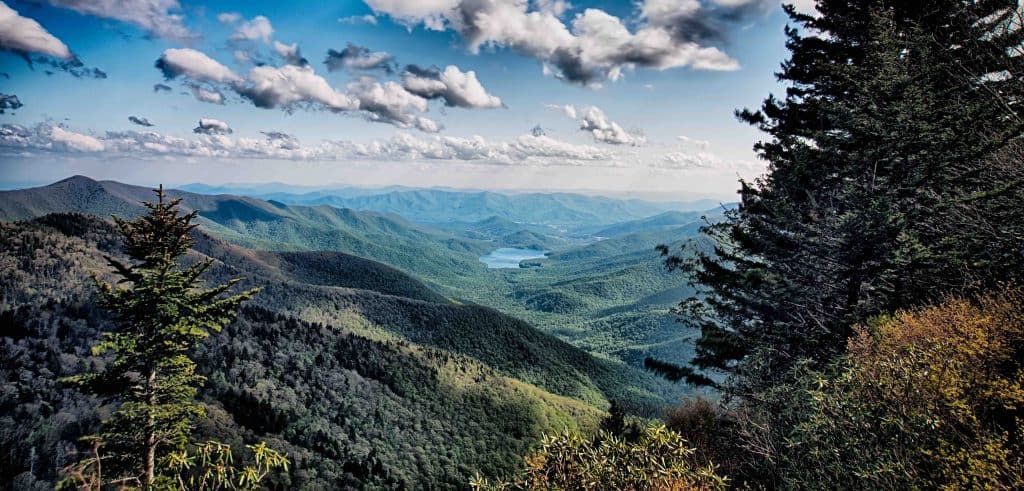
The Appalachian Mountains are a network of natural formations in North America. These mountains first formed roughly 480 million years ago during the Ordovician Period. Its Appalachian Trail stretches an estimated 16 times the height of Mount Everest. By comparison, the peak of Mount Everest measures around 29,029 ft, while the Appalachian Trail extends to an estimated 464,464 ft.
Mississippi River
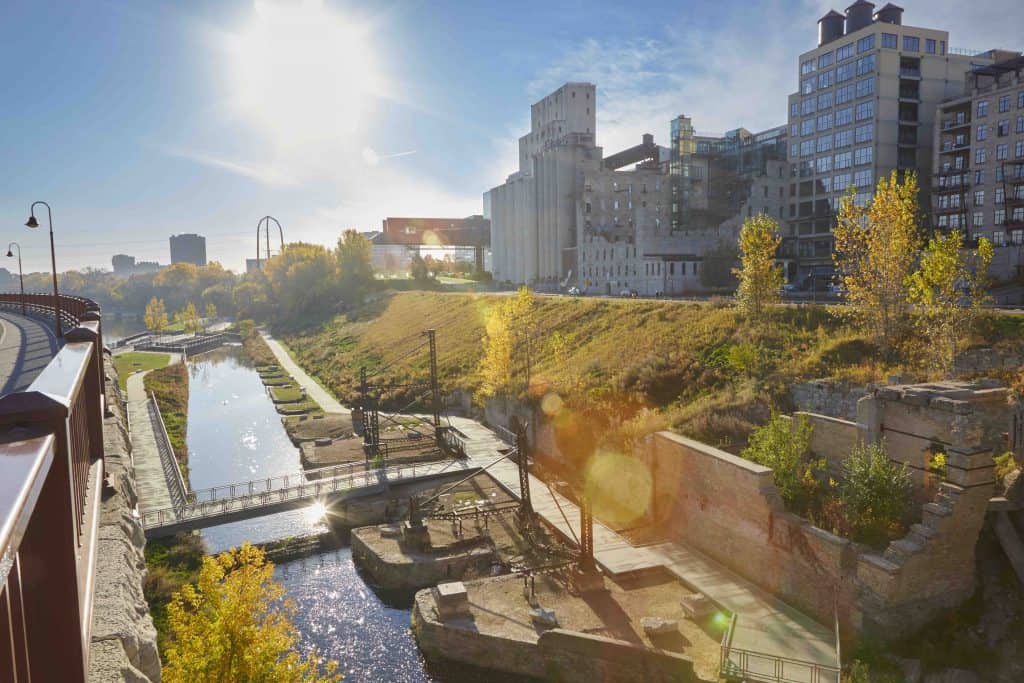
The Mississippi River is the 2nd longest river in the world. It is also the chief river of the 2nd largest drainage system on the North American continent. The Mississippi River’s name originates from the Anishinabe term ‘Messipi’ or ‘Mee-zee-see-bee’, which translates to ‘Big River.’ Equivalent to approximately ⅛ of the entire continent, this river provides water to at least 18 million people from over 50 cities.
Notre Dame Cathedral
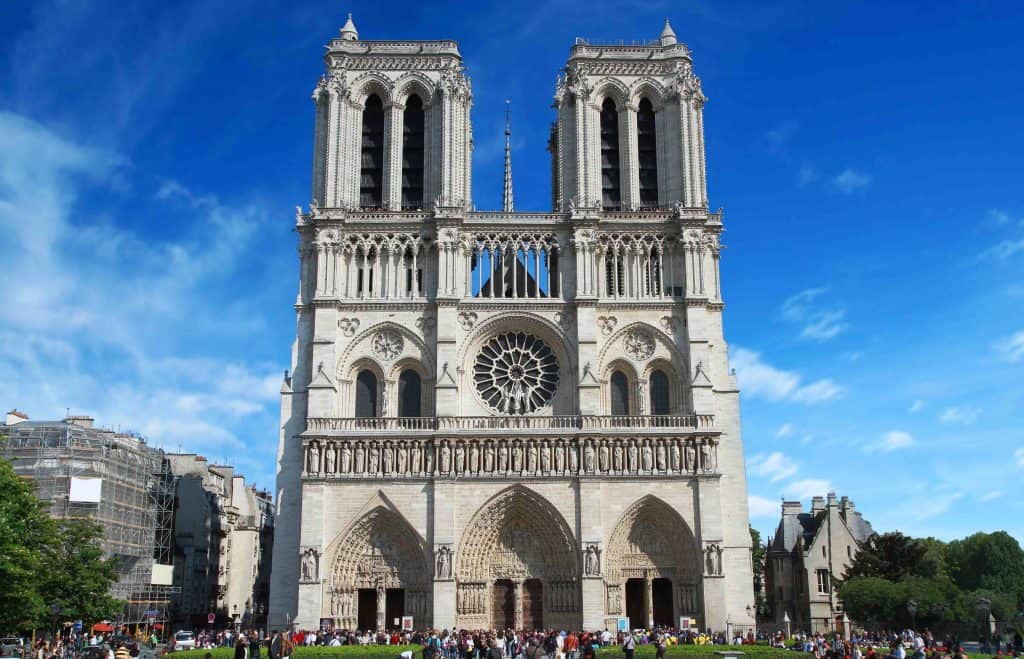
The Notre-Dame de Paris is a Catholic cathedral in the 4th arrondissement of Paris. The cathedral was consecrated in honor of the Virgin Mary and is one of the most excellent examples of French Gothic architecture. Its appearance aimed to appeal to the illiterate communities in the city. As such, Notre Dame showcases heavily painted and gilded sculptures instead of religious texts.
Leaning Tower of Pisa
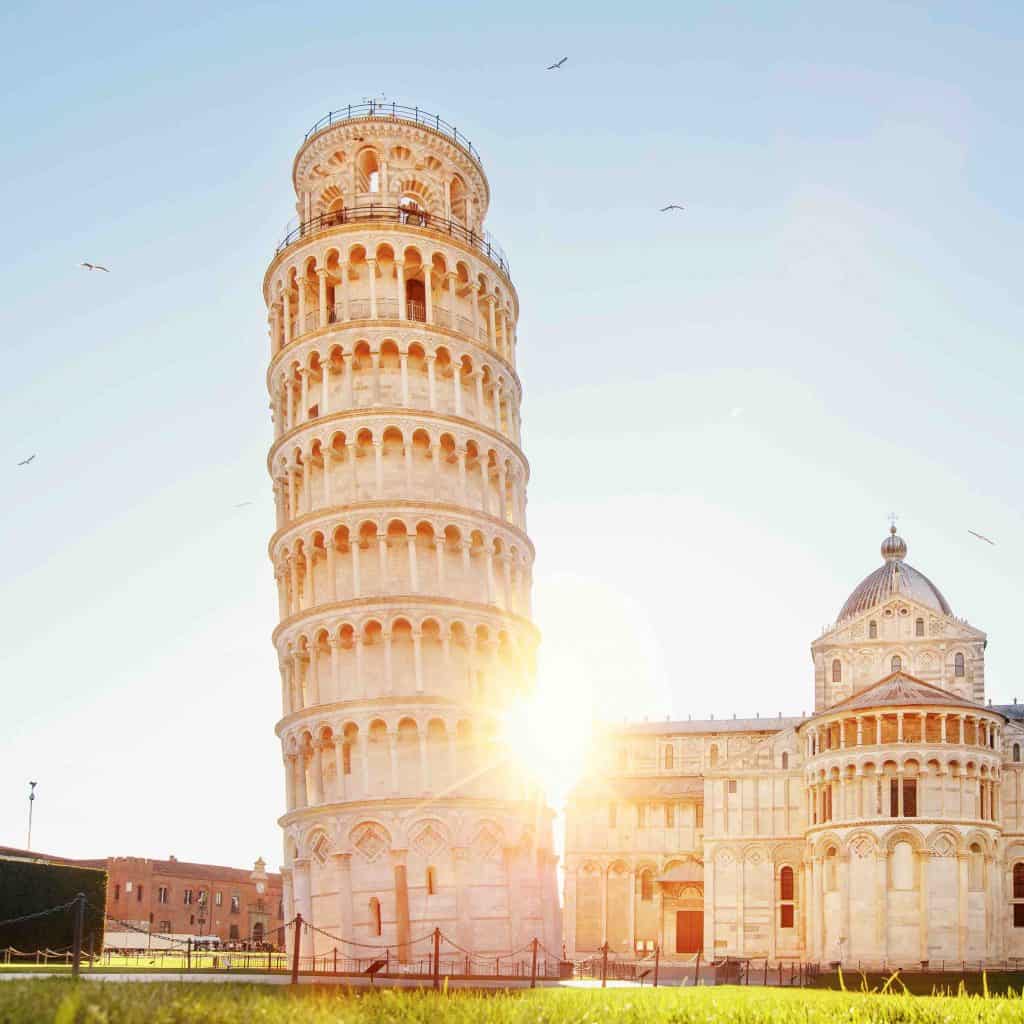
The Leaning Tower of Pisa is a freestanding bell tower owned by the cathedral of the Italian city of Pisa. This landmark is best known worldwide for its nearly 4° lean. Leaning due to the landmark’s soft ground base, this tower continues to gradually incline with time.
Arc de Triomphe

The Arc de Triomphe de l’Étoile is one of France’s most famous monuments. Made entirely from a sedimentary rock called limestone, the Arc de Triomphe de l’Étoile was inspired by the Roman Emperor Domitian’s Arch of Titus, which commemorated the victory of the Jewish War in 81 CE.
Christ The Redeemer
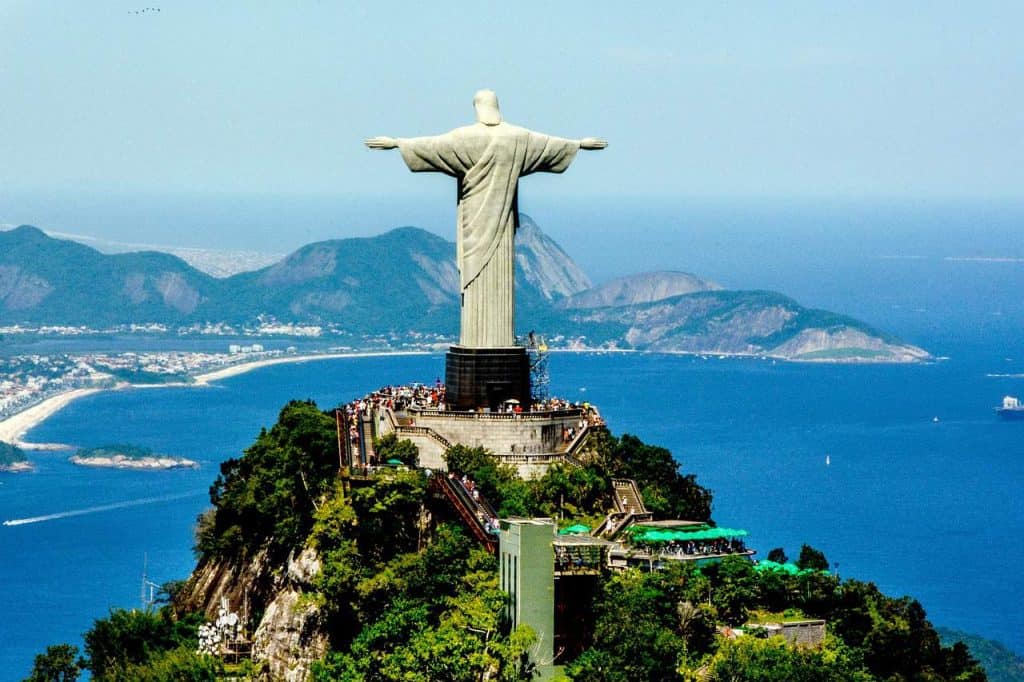
Christ the Redeemer is an artistic statue of Jesus Christ in Rio de Janeiro, Brazil. This landmark was created by French sculptor Paul Landowski and built by Heitor da Silva Costa, with the help of French engineer Albert Caquot. The iconic Christ the Redeemer from the 1900s, cost an estimated $250,000 to construct. This amount in today’s currency converts to $4,000,000.
Washington Monument
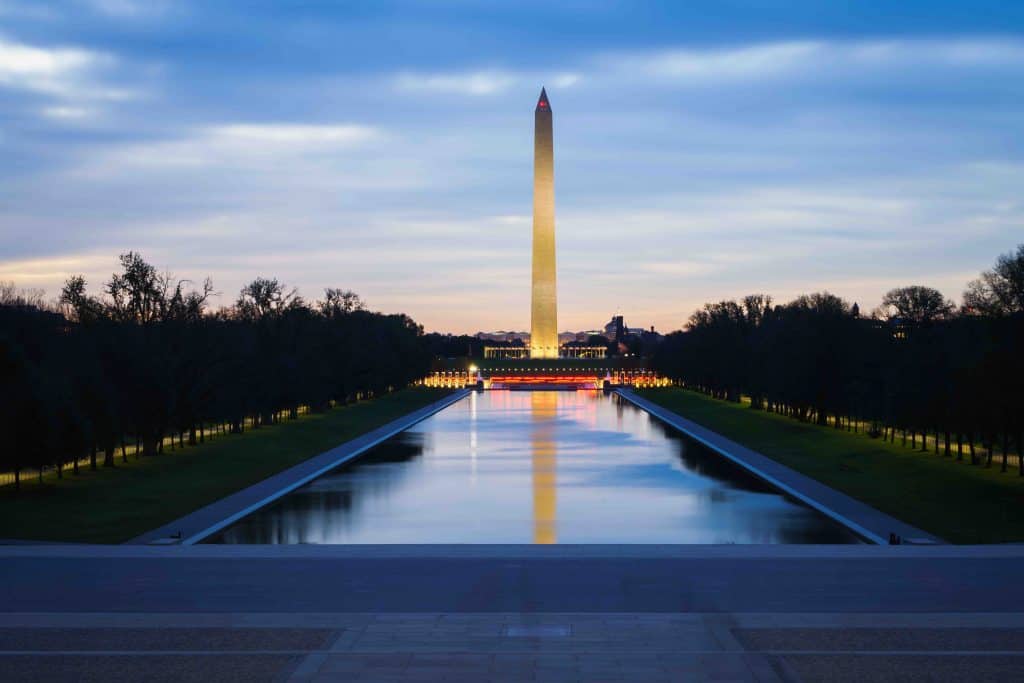
The Washington Monument is a stone pillar housed within the National Mall in Washington. This landmark was built to commemorate the nation’s revered commander-in-chief of the Continental Army during the American Revolutionary War and the 1st President of the United States. It features no less than 194 memorial stones and cost $1.41 million in the 19th century to construct. This amount will easily convert to $30 million today.
Machu Picchu

Machu Picchu is an Incan fortress set high in the Andes Mountains in Peru. This landmark dates back to the 15th century and is renowned for its sophisticated dry-stone walls. These walls fuse huge blocks of stone without the use of mortar. While its exact former use remains a mystery, Machu Picchu was voted as one of the New Seven Wonders of the World in 2017.
Mount Rushmore

The Mount Rushmore National Memorial is a tremendous stone sculpture in the Black Hills region of South Dakota. This memorial which dates back to 1941, features 60-ft-high granite faces of U.S. presidents George Washington, Thomas Jefferson, Theodore Roosevelt, and Abraham Lincoln.
It is said that during the landmark’s construction, the Mount Rushmore workers hiked up the mountain with other self-fulfilling motives. These workers were predominantly miners who sought gold in the Black Hills. Despite their motives, these men were hired as they possessed knowledge of using dynamite and jackhammers.
Trevi Fountain
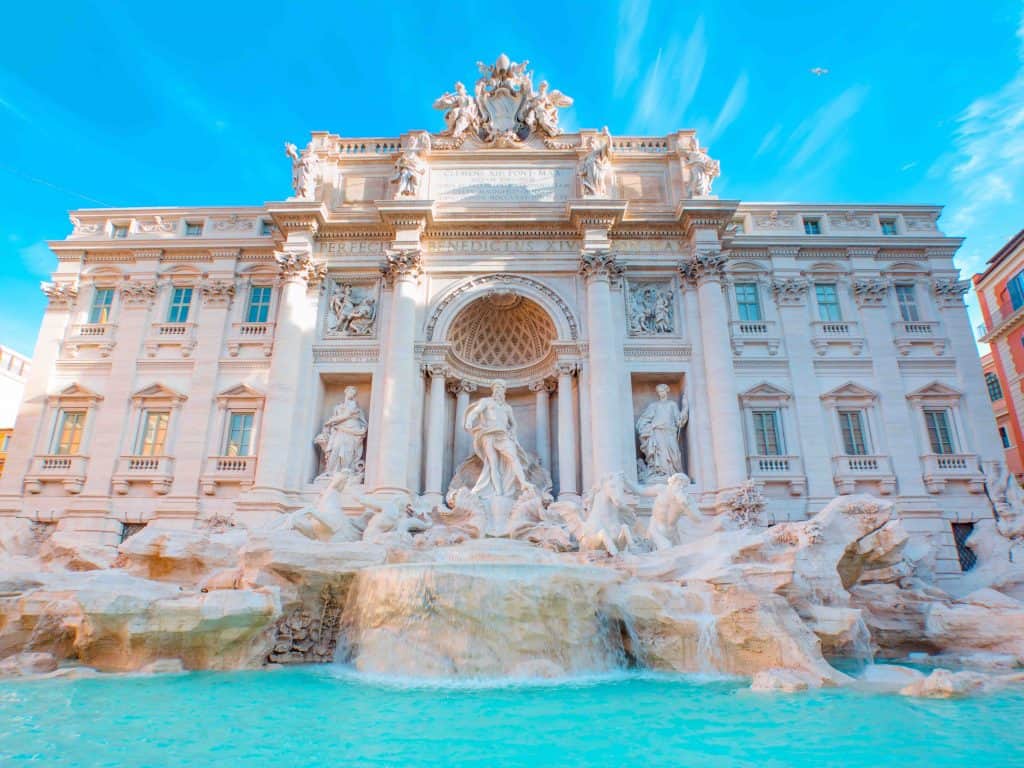
The Trevi Fountain is a fountain in Rome, Italy. This landmark was designed by Italian architect Nicola Salvi before being later completed by Giuseppe Pannini, amongst several others. ‘Trevi’ in the fountain’s name originates from the Latin word ‘Trivium,’ which references the crossing of 3 streets. Additionally, the fountain’s water comes from Salone Springs, which lies around 21 km outside of Rome.
Mount Fuji
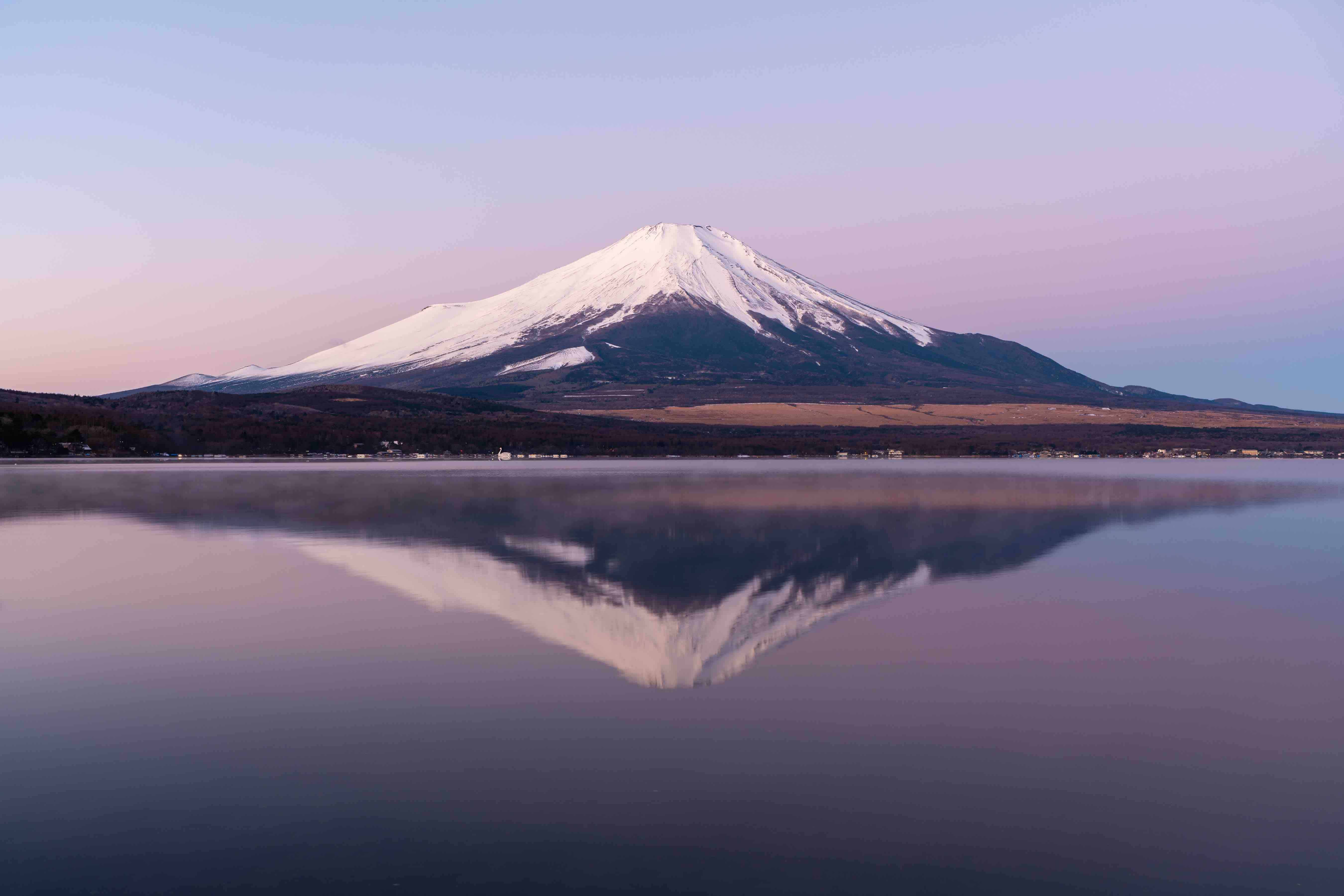
Mount Fuji is an active volcano situated 100 km southwest of Tokyo. Commonly known as “Fuji-san,” Mount Fuji represents the country’s tallest peak, at 3,776 meters. First appearing as Fuji no Yama in Hitachi no Kuni fudoki (713 CE), an early government record, the origin of the mountain’s name remains uncertain. A select group of theories suggests that the name is derived from an Ainu term meaning “fire,” coupled with san, the Japanese word for “mountain.” Revered for its graceful conical form, Mount Fuji has become famous worldwide and is considered the sacred symbol of Japan.
Three Gorges Dam
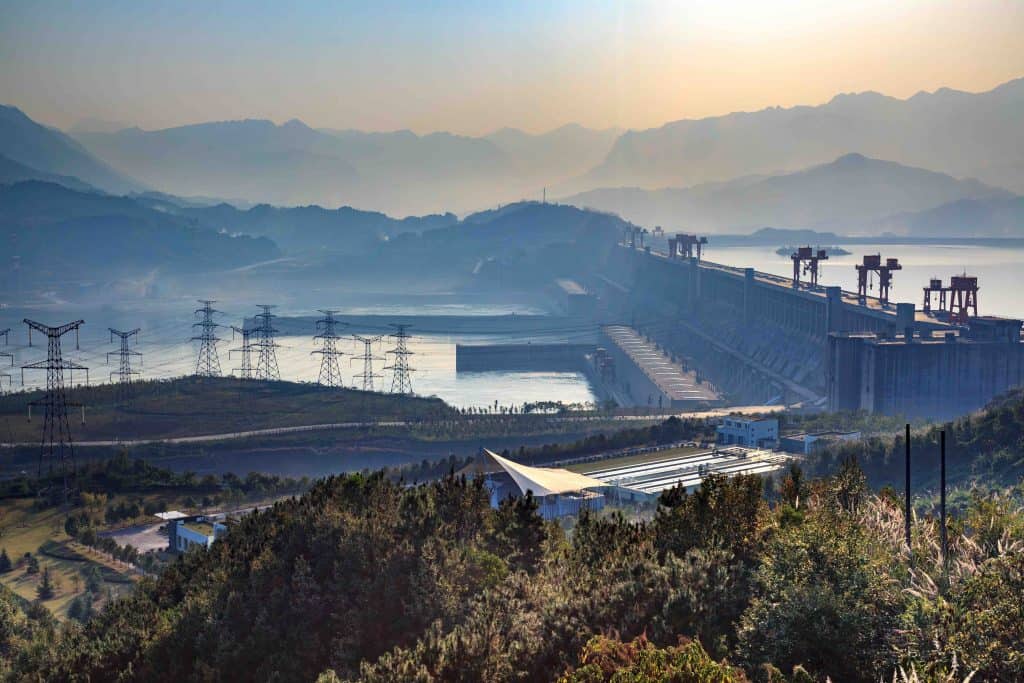
The Three Gorges Dam is a hydroelectric gravity dam. It stretches along the Yangtze River by the town of Sandouping in China. The Three Gorges Dam is the world’s largest power station with the largest installed capacity. This landmark cost $37 billion over 14 years to construct and was designed to control power and floods.
Mount Kilimanjaro
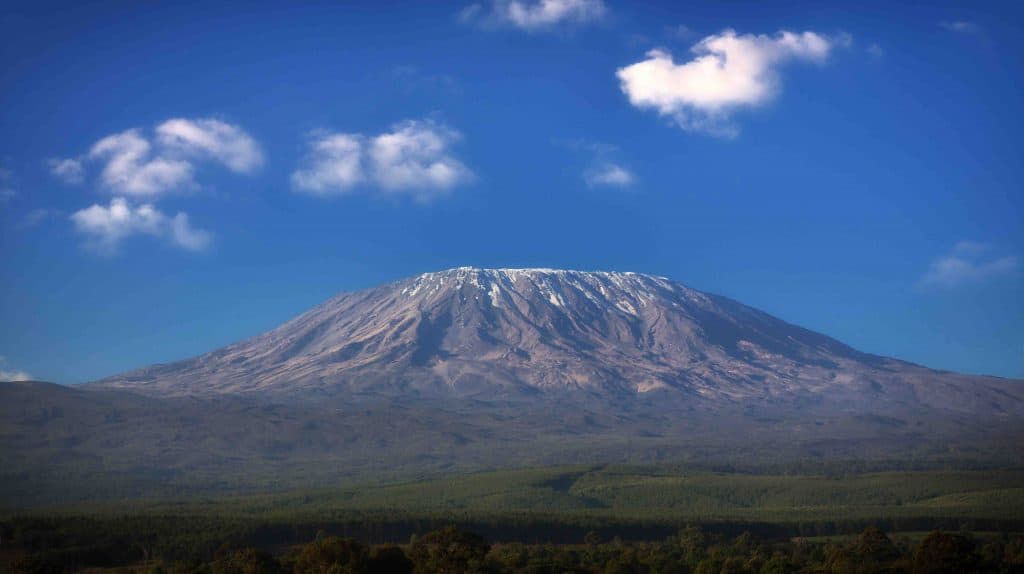
This landmark is a dormant volcano in Tanzania. It possesses three volcanic cones: Kibo, Mawenzi, and Shira. Dubbed Mount Kilimanjaro, this formation is the highest mountain in Africa and the highest single free-standing mountain in the world. It measures 5,895 meters above sea level and about 4,900 meters above its plateau base.
The mountain first erupted nearly 150,000 to 200,000 years ago, and was first climbed by Hans Meyer and Ludwig Purtscheller in 1889. Since then, this landmark has seen an average of 25,000 visitors annually. Its oldest challenger is an 87-year-old man by the name of Valtee Daniel from France.
Space Needle
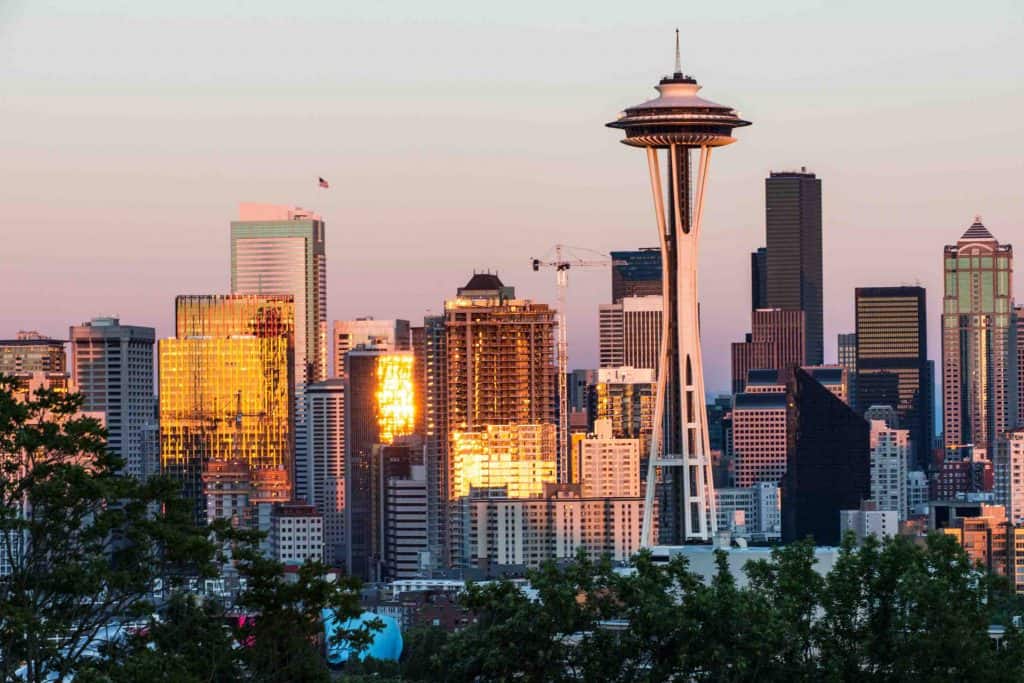
This landmark dates back to 21 April 1962. Known as the Space Needle, this historic observation tower symbolizes the innovative and forward-thinking spirit of Seattle. Built to commemorate the 1962 World’s Fair, this landmark drew almost 20,000 visitors per day upon opening. Since then, the Space Needle has received at least 1 million visitors each year – making it the most popular tourist attraction in Northwest USA.
Victoria Falls
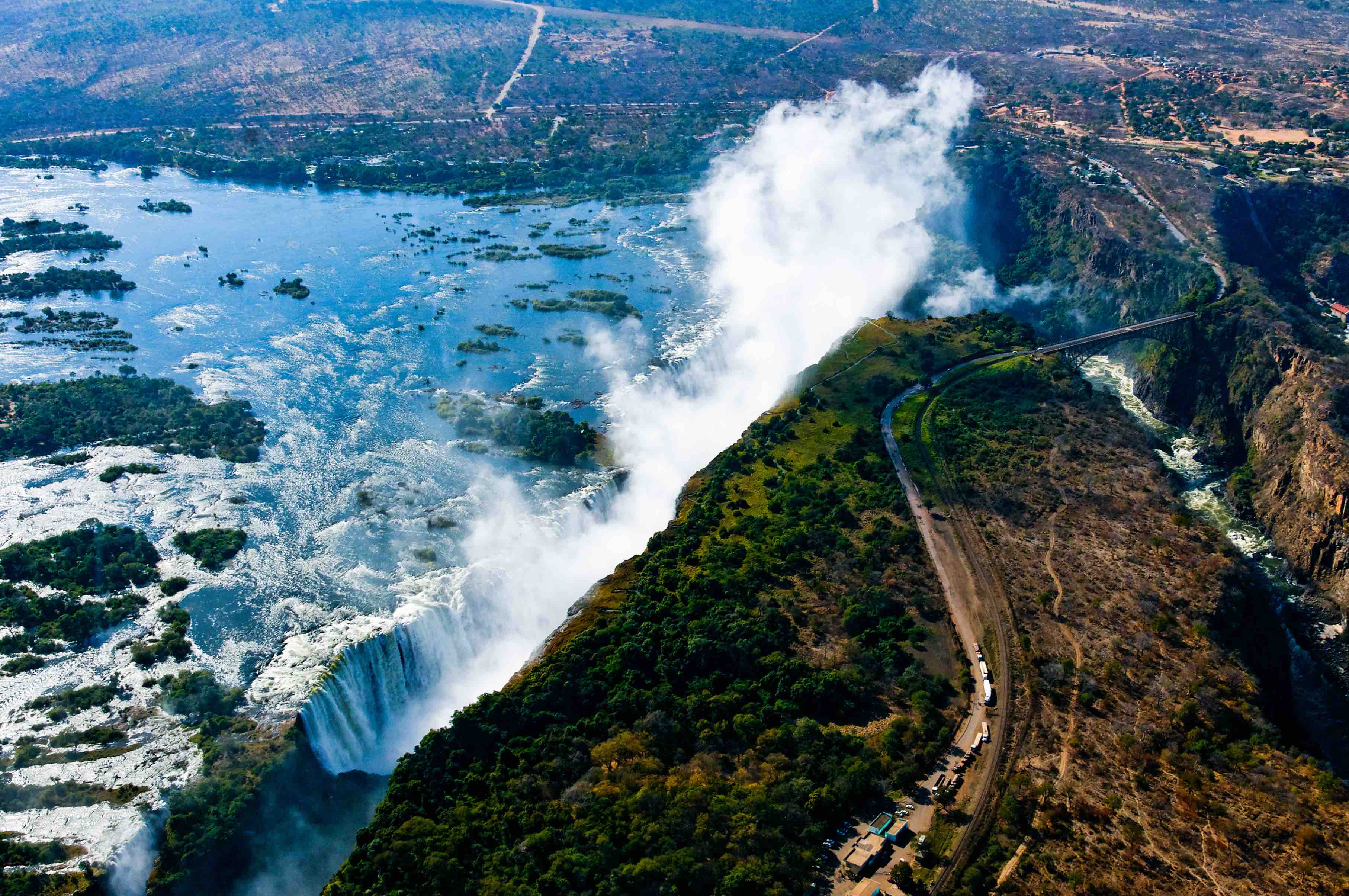
Victoria Falls is a waterfall on the Zambezi River in southern Africa. This landmark provides a habitat for several unique species of plants and animals. Deemed one of the world’s largest waterfalls, with a width of 1,708 m, the Victoria Falls drops over 500 million liters of water per minute.
The Great Sphinx
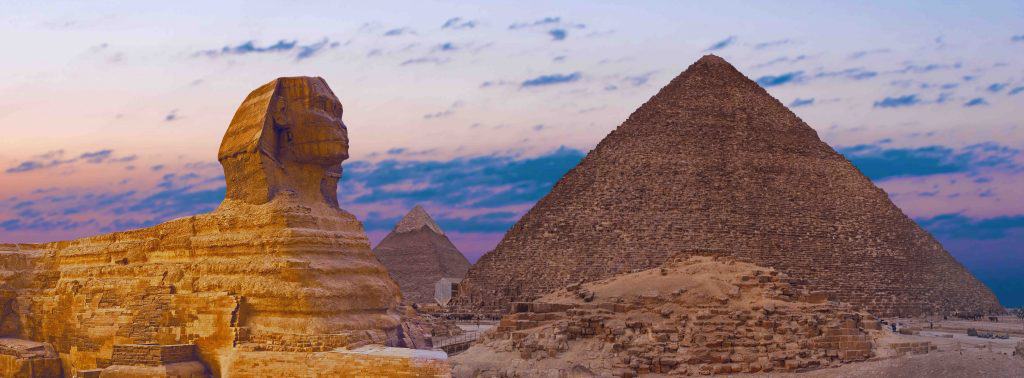
The Great Sphinx of Giza is a limestone statue of a creature at rest. It faces undeviatingly from west to east, and stands on the Giza Plateau on the west bank of the Nile, Egypt. In addition, this landmark is one of the most famous sculptures in the world. It features a lion’s body with a human head, and is intended to represent Ra-Horakhty, a form of the powerful sun god. Many believe this sculpture is also the incarnation of royal power and the protector of the temple doors.
The Little Mermaid
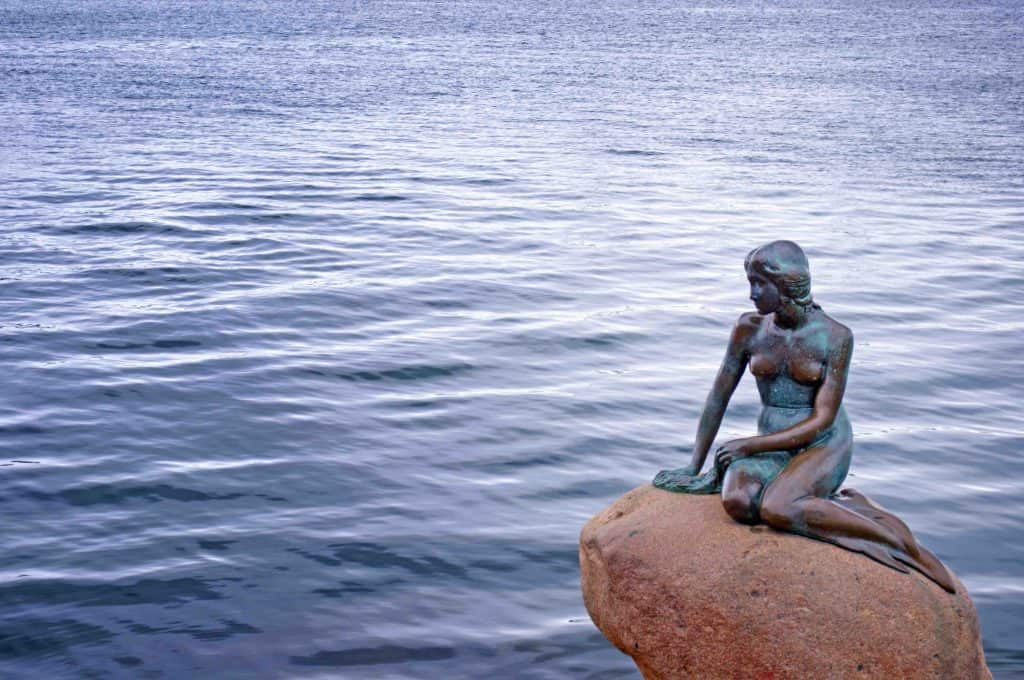
The Little Mermaid is a bronze figure by Edvard Eriksen. It depicts a mermaid mid-transformation to become human. Positioned on a rock by the waterside at the Langelinie promenade in Copenhagen, Denmark, this statue measures 1.25 meters tall and weighs 175 kg. This sculpture also most notably honors the fairytale author Hans Christian Andersen.
Palace of Versailles
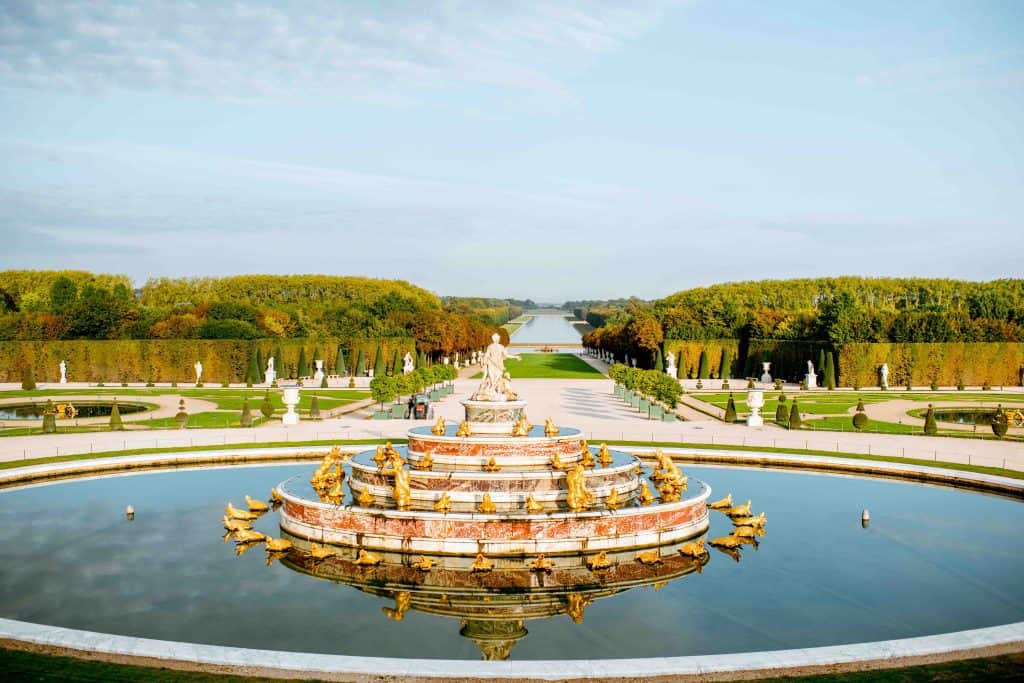
Ever wondered who inhabited this opulent palace? The Palace of Versailles is a past royal residence located in Versailles, France. Deemed the symbol for Absolutism during the Ancien Régime, the Palace of Versailles was originally a small hunting lodge under Louis XIII. It eventually became a true palace during the reign of Louis XIV, the Sun King. Remembered as a ‘larger than life’ individual, the Palace of Versailles was transformed for the purpose of flaunting wealth.
Mecca
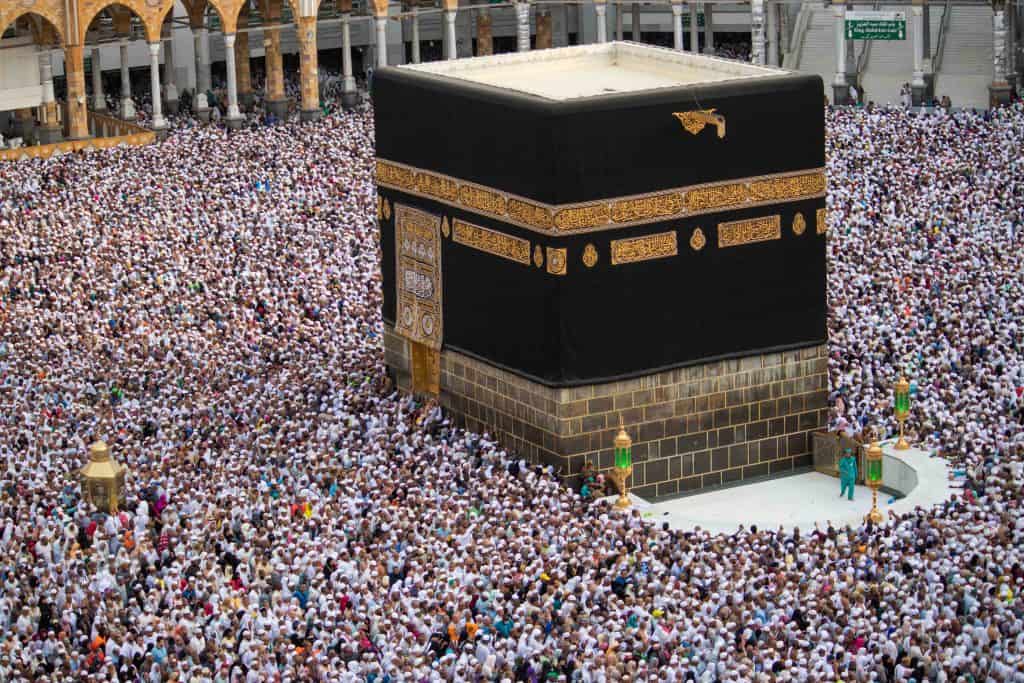
Mecca is the birthplace of the Prophet Muhammad and the faith itself. Off-limits to the general public, only Muslims can access the city. Dating as far back as the 7th century, Mecca is home to the central Masjid al-Haram (Sacred Mosque) and the Kaaba, a cloth-covered cubic structure that is Islam’s most sacred shrine. Each year, millions of Muslims arrive to pay their respects during the annual Hajj (pilgrimage).
Hagia Sophia
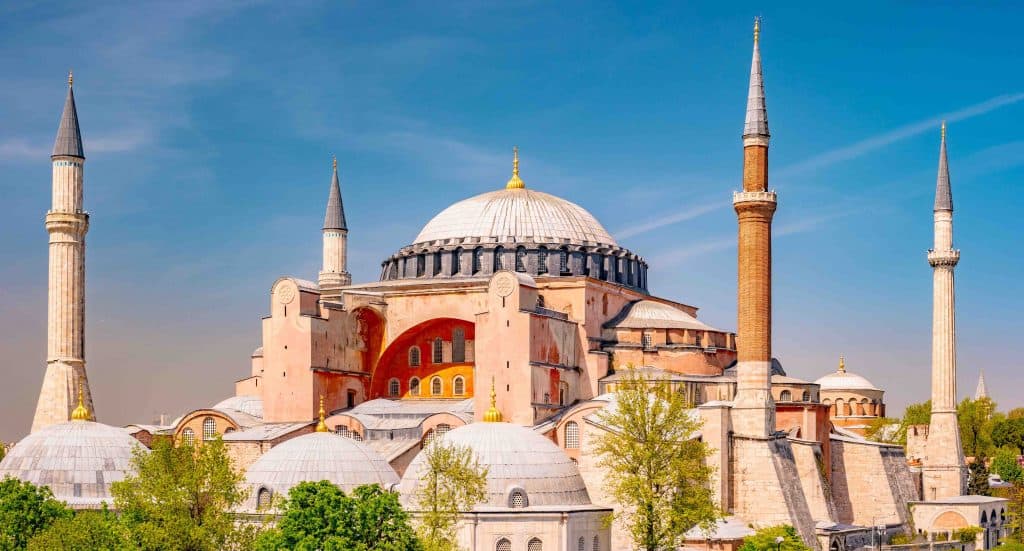
The Holy Hagia Sophia Grand Mosque was formerly the Church of Hagia Sophia. It is a Late Antique place of worship in Istanbul, designed by the Greek geometers Isidore of Miletus and Anthemius of Tralles. Serving as a center of religious, political, and artistic life for the Byzantine world, this landmark has provided historians with many valuable scholarly insights into the period. The Hagia Sophia was also once an important site of Islamic worship after Sultan Mehmed II conquered Constantinople in 1453 and repurposed the structure as a mosque.
Brandenburg Gate

The Brandenburg Gate is an 18th-century monument in Berlin. It is Berlin’s most famous landmark and was once a symbol of Berlin and German division during the Cold War. It is also the site of many large-scale propaganda events by the Nazis in the years leading up to World War II. Today, the gate serves as a national symbol of peace and unity.
Acropolis of Athens
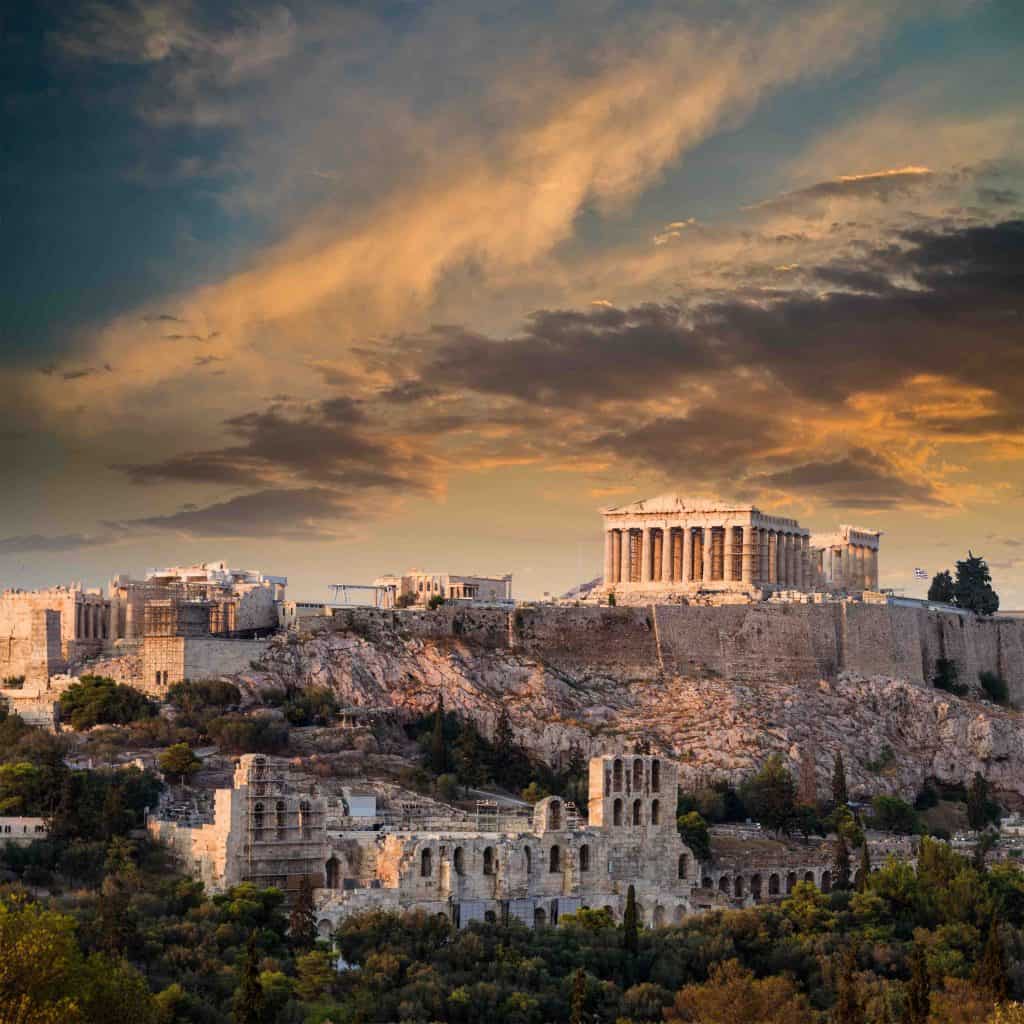
What is the significance of The Acropolis? The Acropolis of Athens is a historic fortress located atop the rocky outcrops of Athens. The site contains the remains of several ancient buildings of great architectural and historical significance, such as the Parthenon. To this day, the Acropolis of Athens continues to stand as a symbol of democracy within the Greek civilization, thus, the beginning of Western civilization and European culture.
La Sagrada Familia
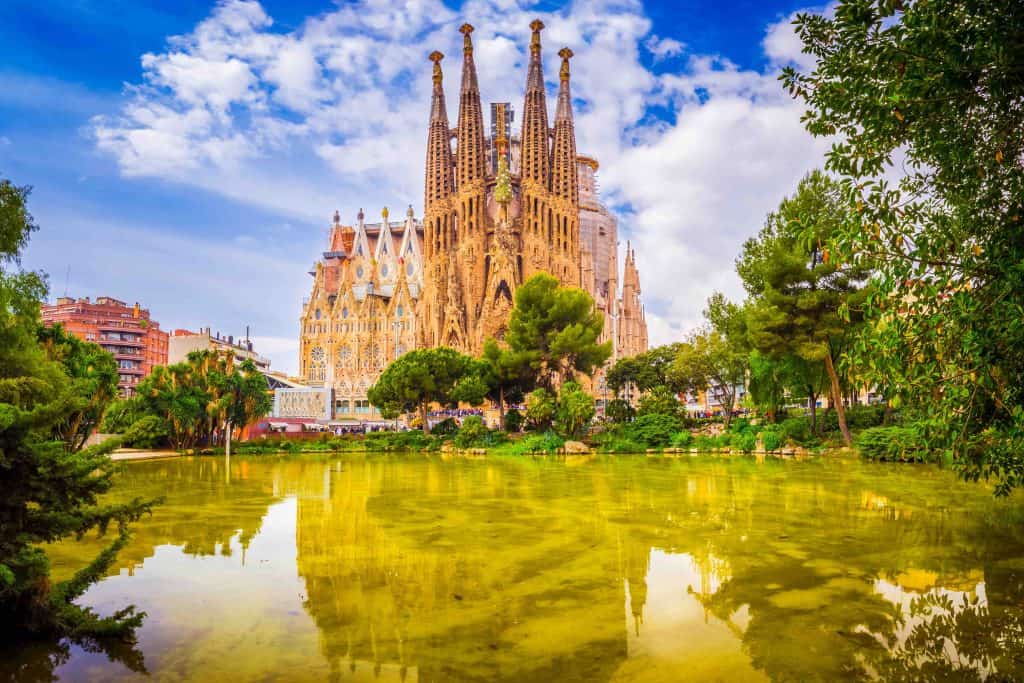
Many also refer to the Basílica de la Sagrada Família as the Sagrada Família. This landmark is a large unfinished Roman Catholic minor basilica in the Eixample district of Barcelona, Spain. Dating back to the mid 19th century, this landmark is historically a church that honors the Holy Family “Sagrada Famili.” It features work by the Spanish architect Antoni Gaudí till his untimely death in June 1926. The incomplete work on the building is now part of a UNESCO World Heritage Site.
Capitol Hill
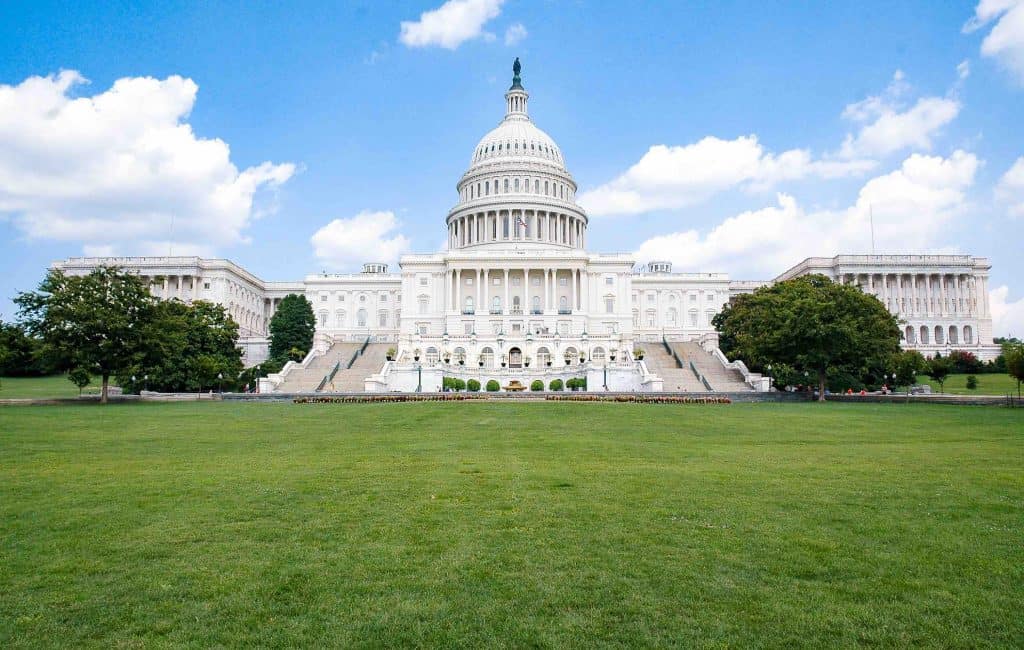
Capitol Hill is the seat of the U.S. government. It is home to the domed United States Capitol, Senate, Houses of Representatives, and the Supreme Court. It is otherwise famous for the redbrick Eastern Market, where vendors sell local produce, handicrafts, and antiques throughout the week. In 1793, President George Washington’s Secretary of State, Thomas Jefferson, named Capitol Hill. This name links back to the famous Temple of Jupiter Optimus Maximus on the Capitoline Hill in Rome.
Al Aqsa Mosque
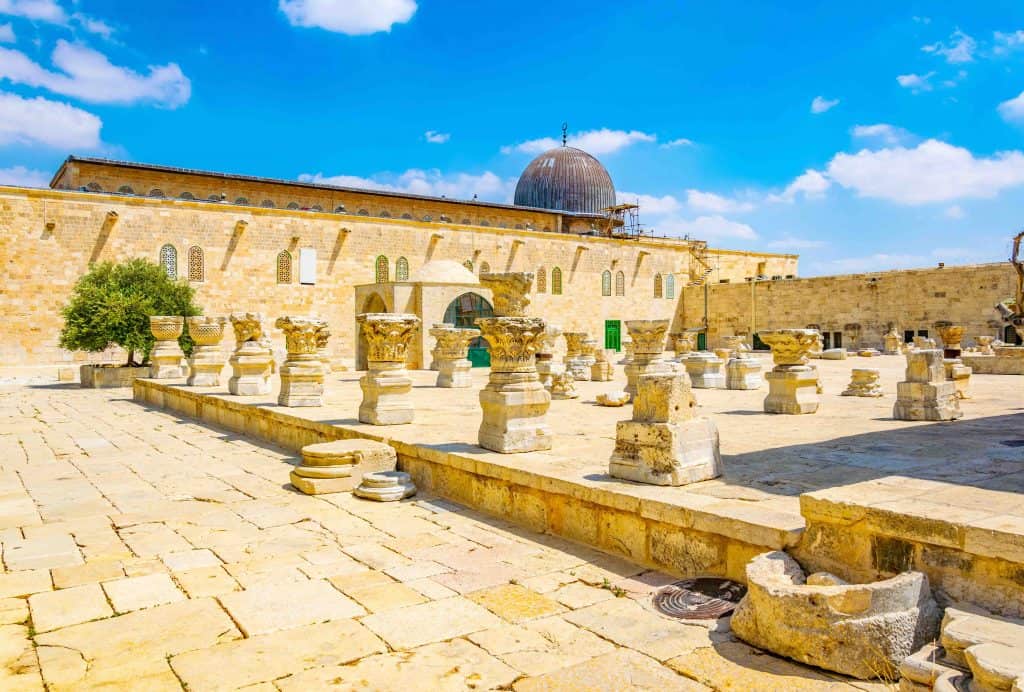
Want to know more about Islam’s 3rd holiest site? Al-Aqsa Mosque is located in the Old City of Jerusalem. Directly translating to ‘the Farthest Mosque,’ Masjid Al-Aqsa is an important landmark in Islam. Muslims believe that the Prophet Muhammad leaves the Sacred Mosque in Mecca to Al-Aqsa during the ‘Night Journey,’ before proceeding to heaven.
Angkor Wat
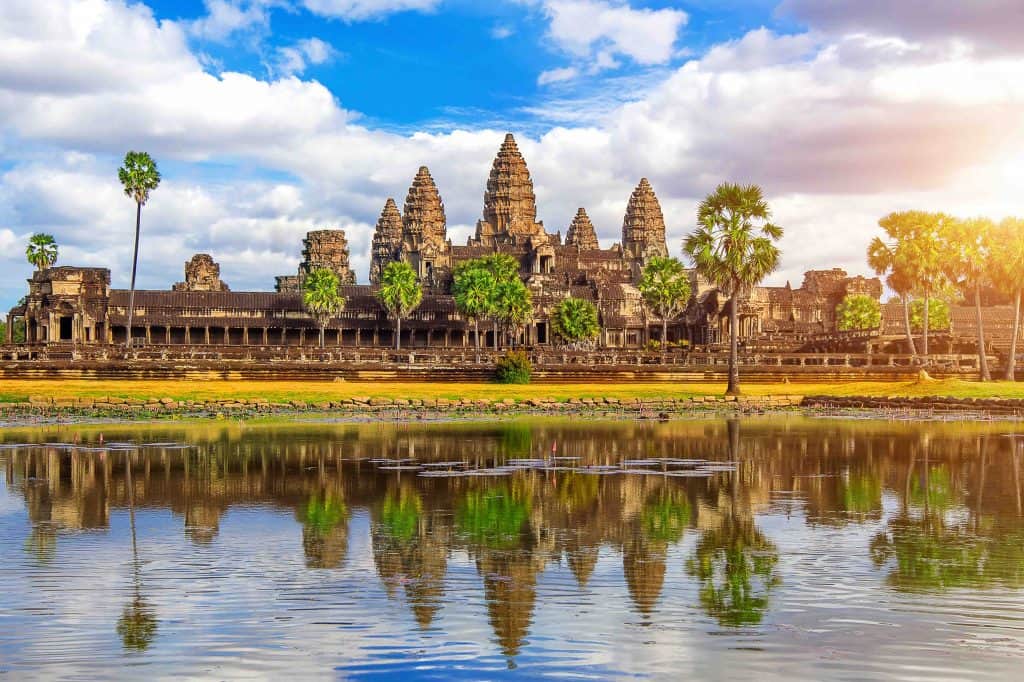
Angkor Wat is in northwest Cambodia. It is the largest religious structure and temple complex in the world by land area. Measuring 162.6 hectares, the temple features a quincunx of 4 towers. These towers surround a central spire that rises to a height of 65 meters above the ground. Angkor Wat was once a Hindu temple. It dates as far back as the first half of the 12th century. This site honored the Hindu god Vishnu but eventually became a Buddhist temple by the end of that century.
Manneken Pis
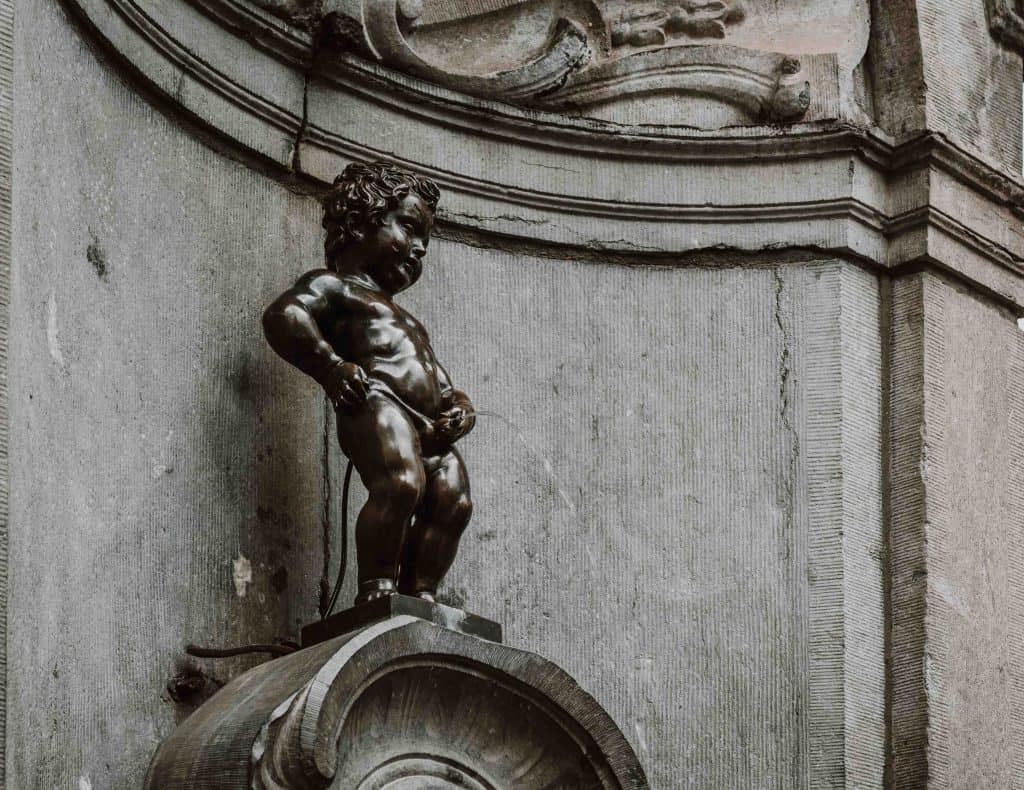
Manneken Pis is a landmark that takes the form of a bronze fountain sculpture. This sculpture depicts a young naked boy urinating into the fountain’s basin. The origins of this sculpture remain uncertain. However, many theories exist to justify its existence.
One tale says that the statue is a boy who saved Brussels from disaster by peeing on the fuse of an explosive. On the other hand, another story depicts the boy as the victim of a witch’s spell. In this story, the witch freezes the boy in time as punishment for peeing on her door. Regardless of these theories, the statue is the best-known symbol that represents the people of Brussels. The original Manneken Pis now sits in the Brussels City Museum.
The Great Buddha of Kamakura
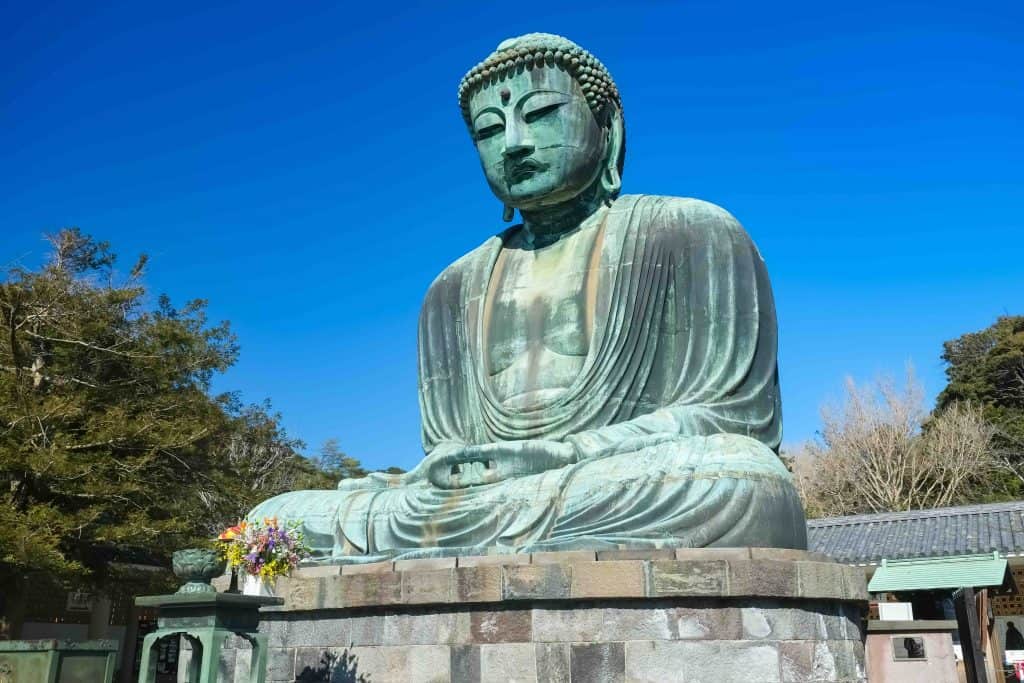
Here are more famous landmarks for those who love Japan! The Great Buddha of Kamakura, otherwise known as the bronze statue of Amitabha Buddha, is the primary image of Kotoku-in. It is Japan’s National Treasure. Originally enshrined in Daibutsu-den Hall, the Great Buddha of Kamakura now sits in Kotoku-in, a temple belonging to the Jodo Sect of Buddhism. Committed to the liberation of all beings, the Great Buddha welcomes all, regardless of their class and sins.
Petra
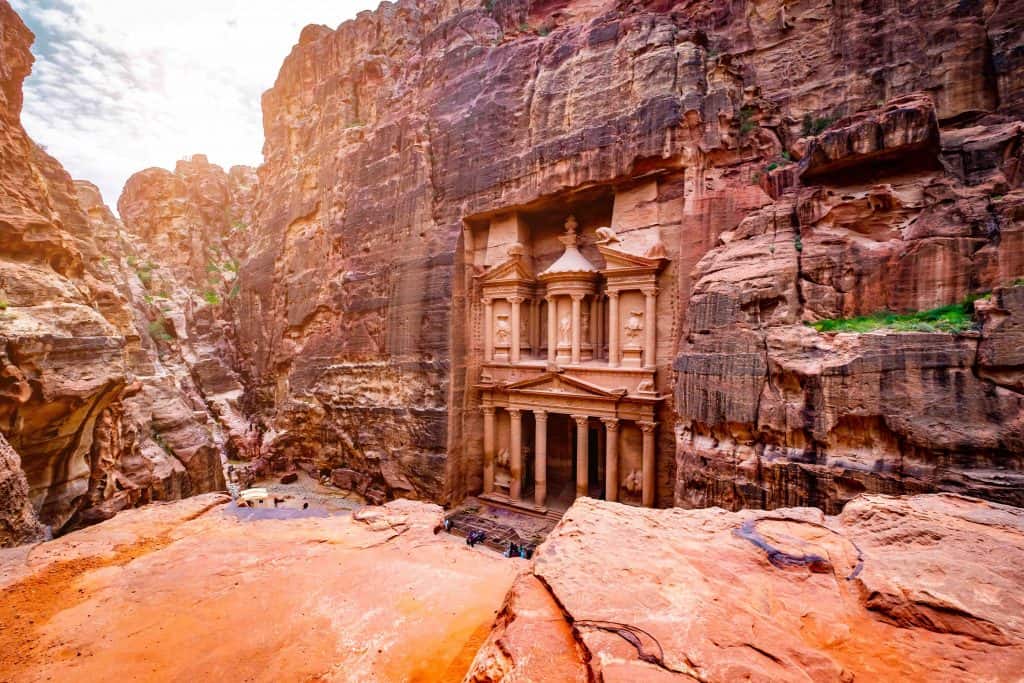
Petra is a famous archaeological site in Jordan. It was the capital of the Nabatean Kingdom in 300 B.C. Today, one can only reach the site through a narrow canyon. Here, one will find tombs and temples carved into pink sandstone cliffs. Also known as the “Rose City,” Petra showcases the world-famous 45m-high Al Khazneh. The Al Khazneh is a temple with an ornate, Greek-style facade and known as The Treasury. This region is a UNESCO World Heritage site in 1985. It is now also one of the New Seven Wonders of the World.
Chichen Itza
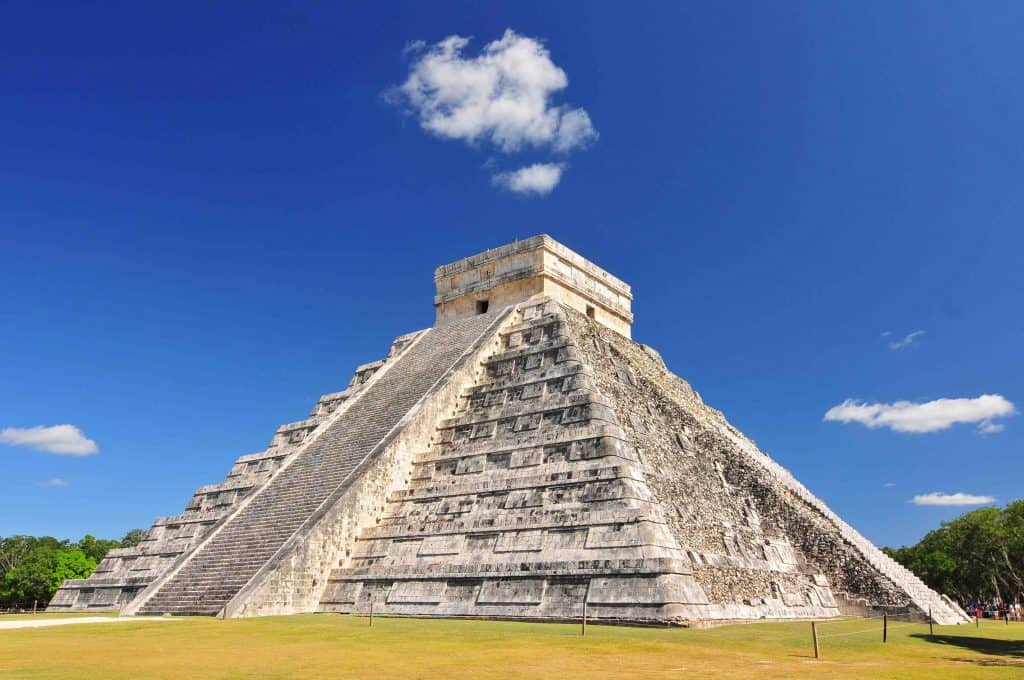
This landmark is a labyrinth of Mayan ruins on Mexico’s Yucatán Peninsula. At its peak, Chichen Itza was the most populous city in the entire Yucatan Peninsula. Its ruins reflect a great civilization filled with architectural marvels and ancient secrets. This area was home to several cenotes, including the Xtoloc Cenote or “Sacred Cenote.” It is also famous for its graphic stone carvings, which adorn the Temple of the Warriors and the Wall of the Skulls.
Inukshuk
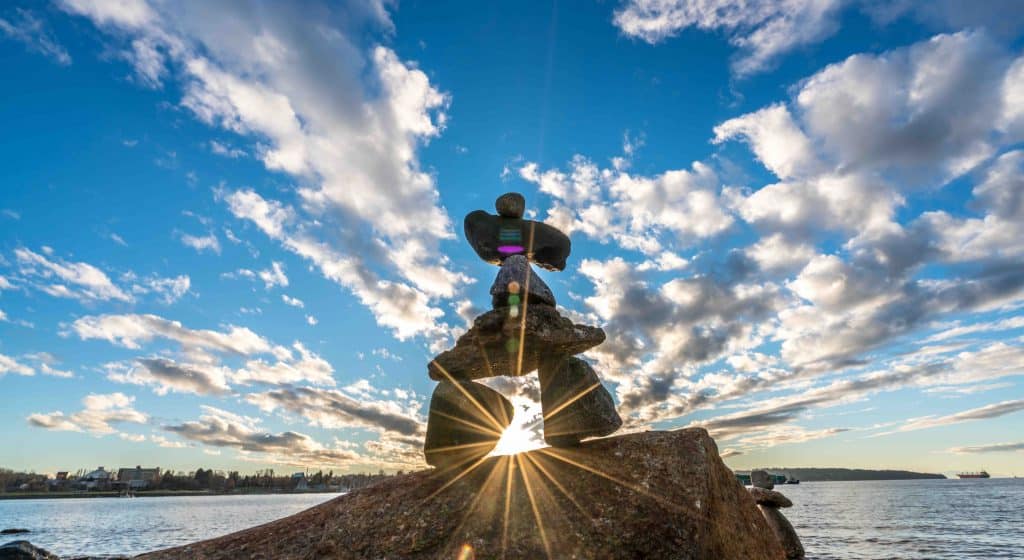
An inuksuk or inukshuk is an artificial stone landmark for use by the people of the Arctic region in North America. It signifies safety, hope, and friendship. In addition, the Inukshuk in Canada represents the ‘nation’s heart’ and was once used as an essential tool for navigation. One can find The Inuksuk National Historic Site of Canada on the Foxe Peninsula, approximately 88.5 km from Cape Dorset on the Southwest of Baffin Island, Nunavut.
Table Mountain
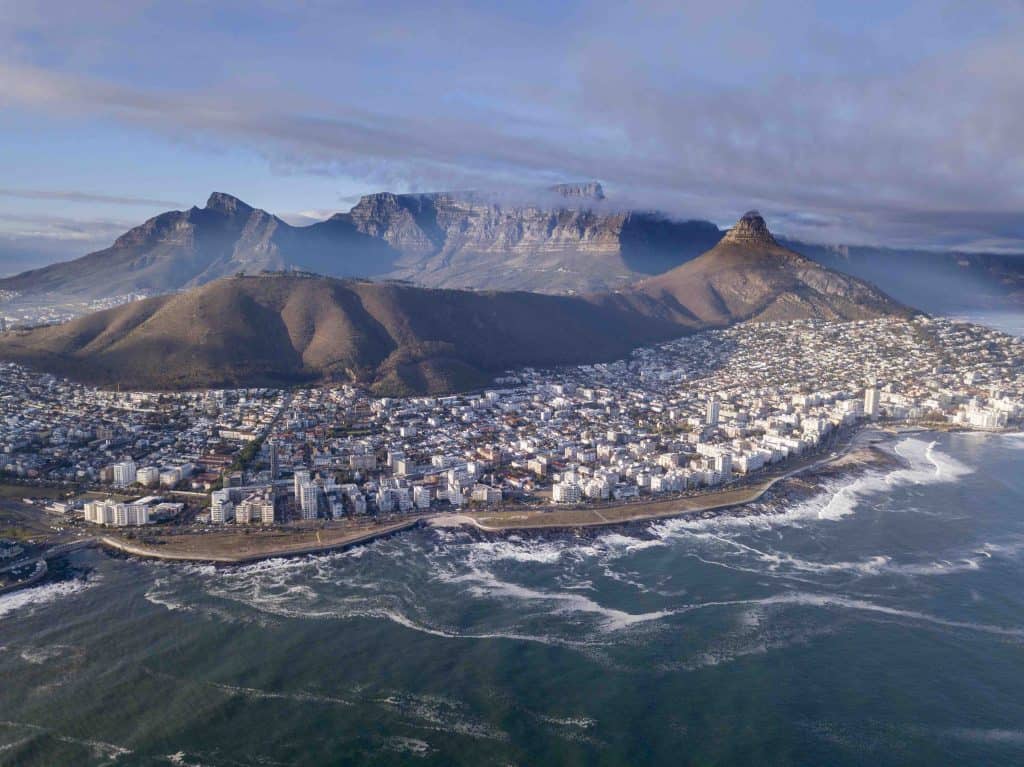
The Table Mountain is a flat-topped mountain. It forms a prominent landmark overlooking Cape Town in South Africa. The indigenous Khoisan people of the Cape call this landmark Hoerikwaggo. Peaking at 1086m above sea level, this mountain is South Africa’s most photographed attraction. It is also part of the Cape Floral Kingdom World Heritage Site, and home to over 8200 plant species. Today, there are more than 350 trails to get to the top of Table Mountain.
Parc Guell

Barcelona’s most famous attraction, the Parc Guell, was designed by one of Spain’s most prominent architects, Antoni Gaudí, and was initially envisaged to be a modern housing estate far from the smog and chaos of the city down below. His plans, however, which called for houses with modern conveniences such as running water and facilities such as a market, a laundry room, a church, and a public square, were quickly abandoned. Inspired by the British garden city movement of the 19th century, where housing communities were designed with outdoor, industrial, and commercial areas alongside them, Parc Guell was first named by Antoni Gaudí with the English word ‘park.’
Forbidden City
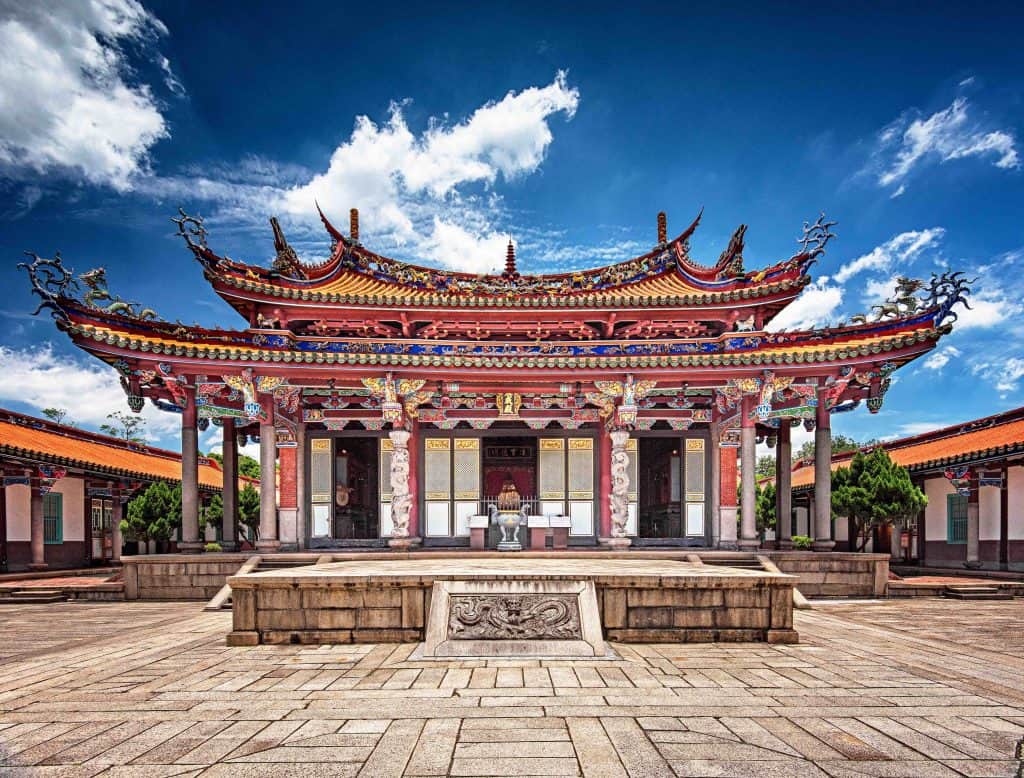
This is a palace complex in Dongcheng District, Beijing, China, at the center of the Imperial City of Beijing. Many call this region the Forbidden City, or ‘Zijin Cheng’. Historically, no one could enter or leave without the emperor’s permission. Many believe that The Forbidden City is a physical representation of the supreme, heaven-sent power of the emperor. As a result, the ancient Chinese consider the palace to be the center of the world, with all crucial gates and halls arranged symmetrically on the north-south central axis of old Beijing. Now this place is one of the most impressive famous landmarks you must visit on your next trip to China!
Iguazu Falls
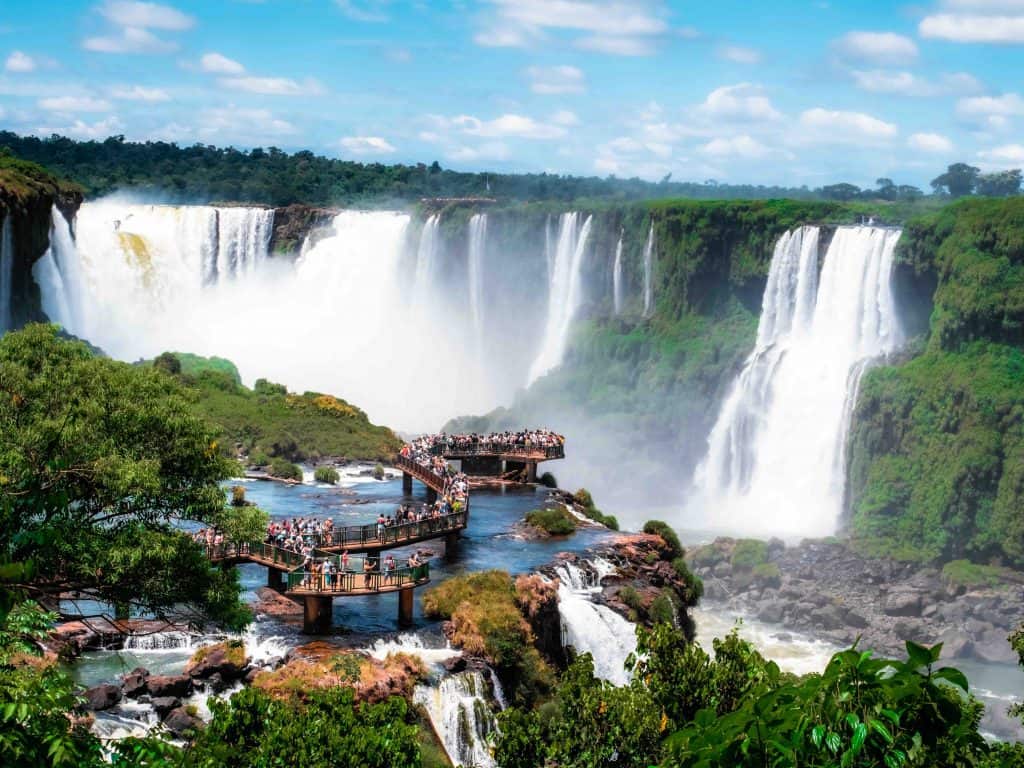
The Iguazú Falls are a collection of waterfalls on the border of Misiones, Argentina, and Paraná, Brazil. Together, these landmarks make up the largest waterfall in the world and divide the river into the upper and lower Iguazu. The most impressive of Iguazu Falls is a U-shaped formation which many call ‘The Devil’s Throat.’ Here, 14 falls plunge over 350 ft, causing a rise of mist that can float up to 490 ft in the air.
The Blue Mosque
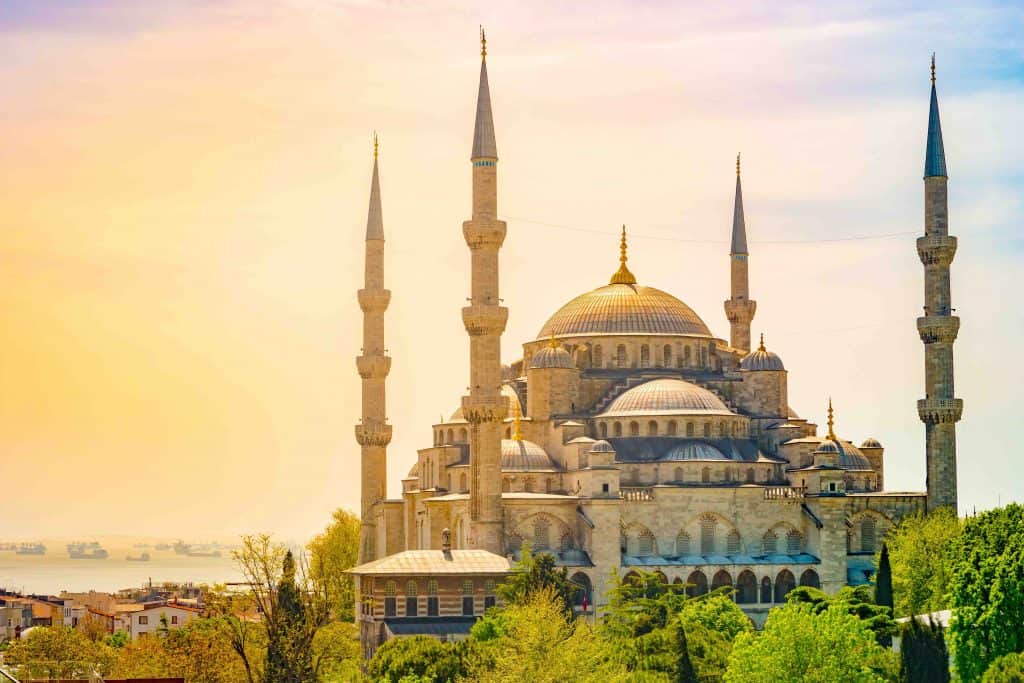
The Sultan Ahmed Mosque is a historical imperial mosque located in Istanbul, Turkey. Also known as the Blue Mosque, this landmark was constructed between 1609 and 1616 during the rule of Ahmed I. Showcasing more than 20,000 handmade ceramics in turquoise with red tulip designs known as İznik tiles, more than 200 stained-glass windows fit the mosque’s blue interiors.
Luxor Temple
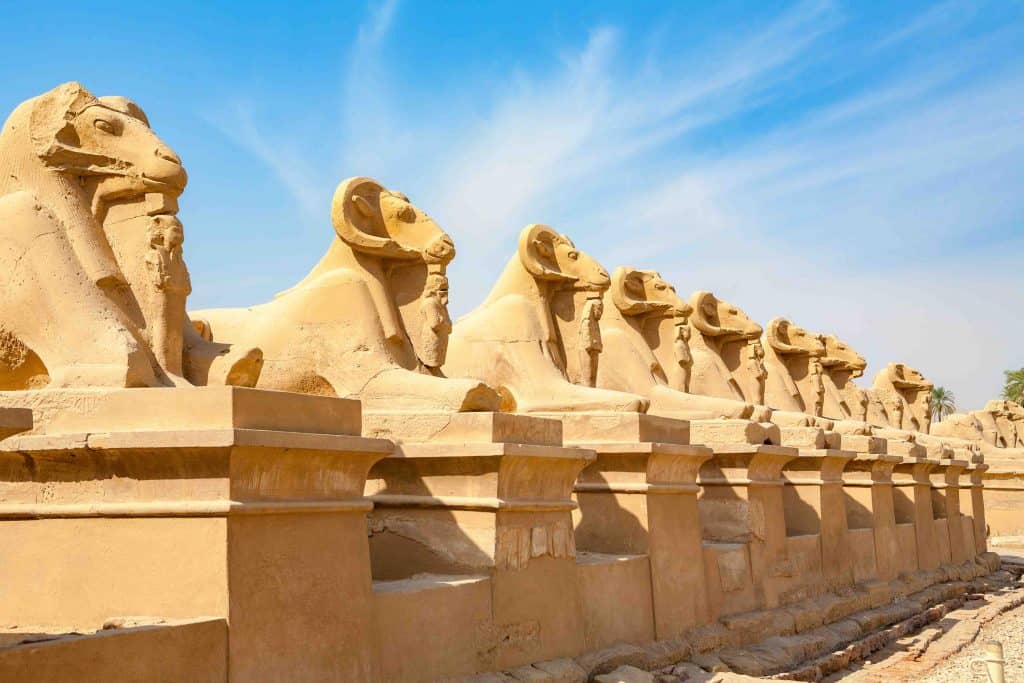
The Luxor Temple is a network of Ancient Egyptian temples located in Luxor City. If you’re lucky, visitors can still witness historic religious rituals at this “Southern Sanctuary”. Here, locals host the annual Opet Festival, an event in which statues of Mut, Khonsu, and Amun travel from Karnak to Luxor.
The Moscow Kremlin

One of the most famous landmarks in Russia, the iconic symbol of power and authority! The Russian ruling dynasty of Rurikids founded the Moscow Kremlin, which now lies in the city center. This world-renowned site includes 5 palaces, 4 cathedrals, the enclosing Kremlin Wall, and the Kremlin towers. Lastly, this landmark now serves as the official residence of the president of the Russian Federation.
Tilicho Lake

Did global warming help create this magnificent site? This picturesque landmark is a lake in the Manang district of Nepal, which lies at an altitude of 4,919 meters in the Annapurna range of the Himalayas. Many believe that it is 1500 m in length and 600 m in width. Upon verification, Tilicho Lake will be the highest lake in the world.
Temple of Besakih
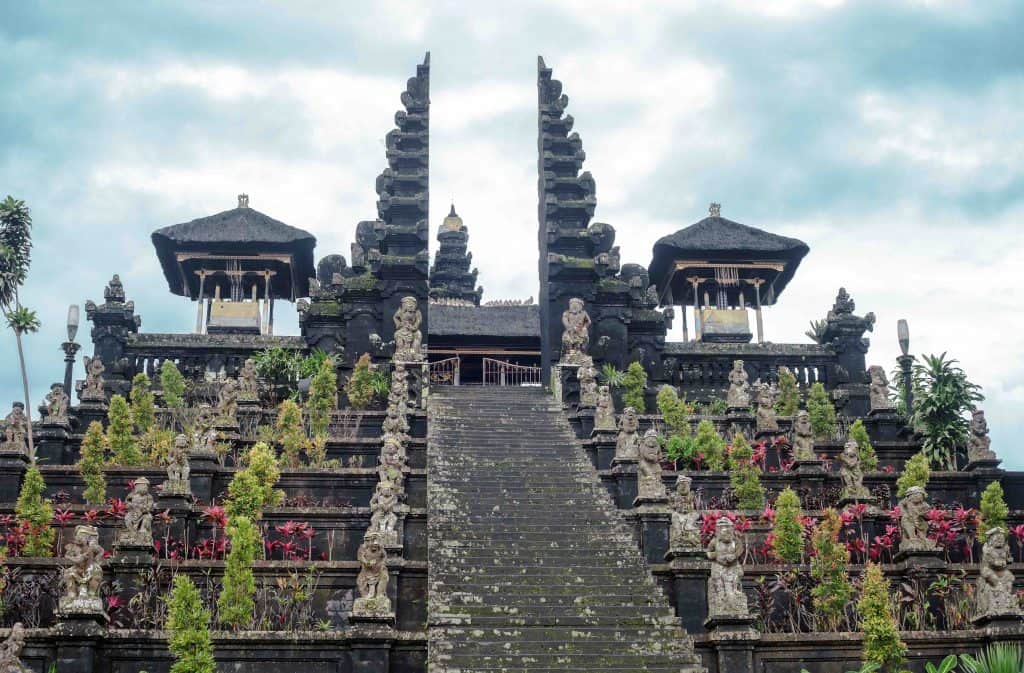
The Besakih Temple is part of a complex of 23 temples in the village of Besakih. Lying along the slopes of Mount Agung in Indonesia, this landmark is the largest, holiest, and most important temple in Balinese Hinduism history. While the precise origins of the temple are unclear, the stone bases of Pura Penataran Agung and several other temples resemble megalithic stepped pyramids. This suggests that the temples date back to at least 2,000 years ago.
Pompeii
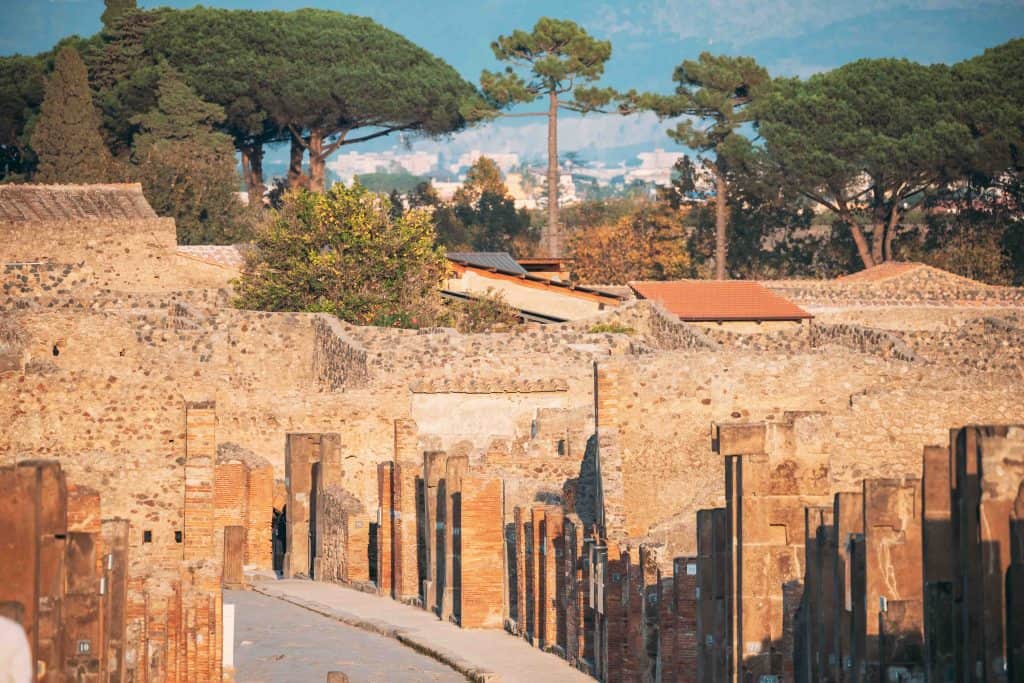
Pompeii was once a prosperous and sophisticated Roman city. A catastrophic eruption by Mount Vesuvius in 79 CE, buried the city under meters of ash and pumice. The archeological findings, streets, and houses of Pompeii are now available for visitors to freely explore. The remains scattered across the region include bone, flesh, and clothes mixed with plaster. Mount Vesuvius is still an active volcano, despite only producing sulfur-rich steam. In total, Pompeii is now home to the bodies of more than 100 people preserved as plaster casts.
Konark Sun Temple
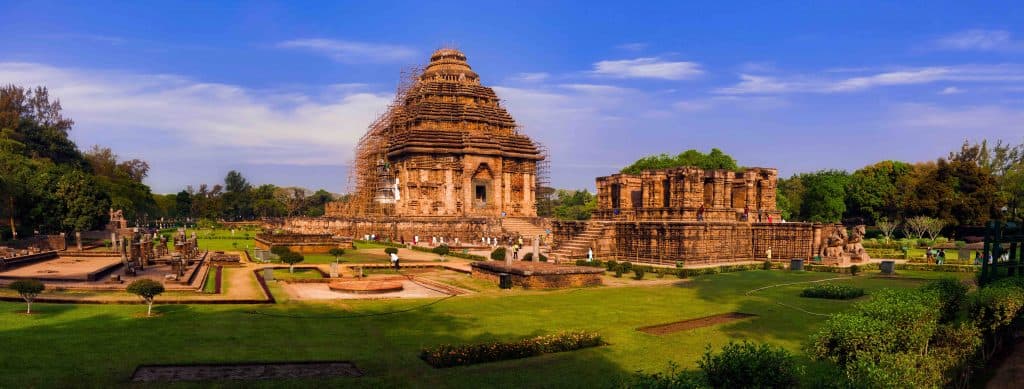
The Konark Sun Temple is a 13th-century CE Sun temple on the coastline of Odisha, India. Attributed to king Narasimhadeva I of the Eastern Ganga dynasty in 1250 CE, the temple, which is a UNESCO World Heritage site, is famous for its unique architecture, geometrical patterns, and carved wheels that once served as sundials. Here, one can witness three images of the Sun God in three directions, and view sun rays at dawn, noon, and sunset.
Middle of The Earth
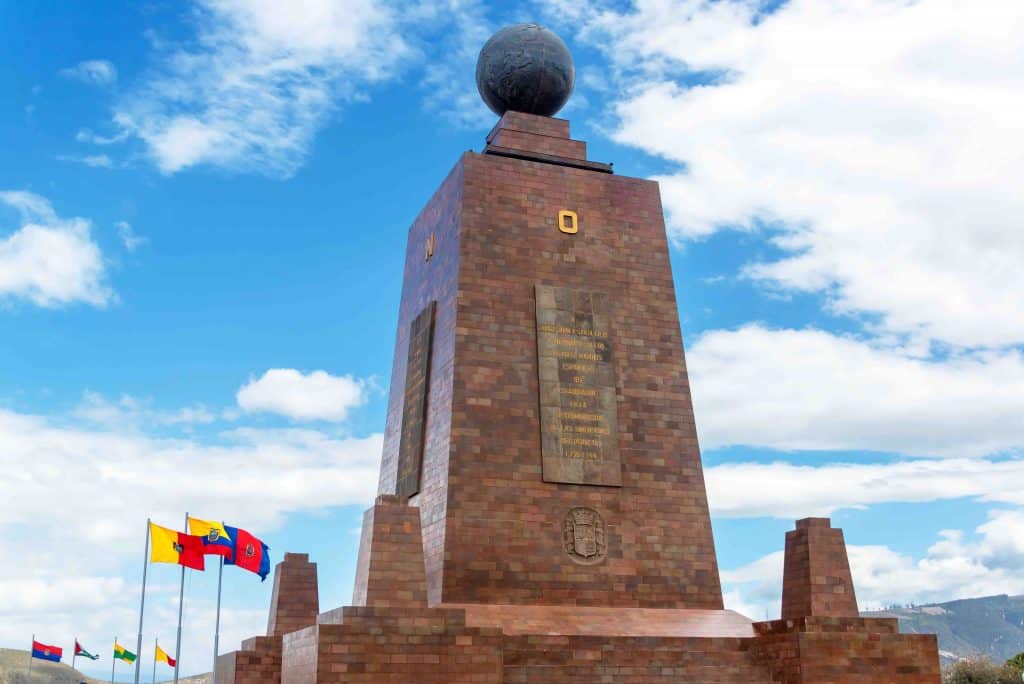
The Ciudad Mitad del Mundo in Pichincha, Ecuador, is home to the Monument of the Equator. Otherwise known as The Middle of The World, this landmark highlights the exact location of the Equator and commemorates the 18th century Franco-Spanish Geodesic Mission, which fixed its approximate location. This 30-meter-tall monument dates back to 1982 and serves as a replacement to an older, smaller construct built by the Government of Ecuador under the direction of the geographer Luis Tufiño in 1936.
Potala Palace
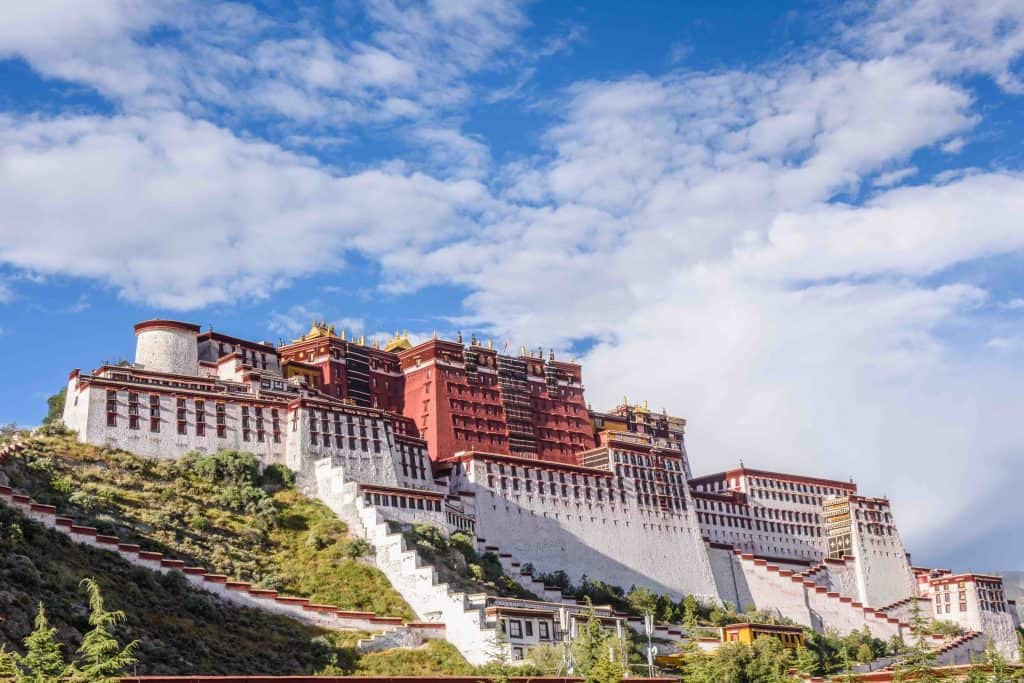
We’ve got more famous landmarks for you! The Potala Palace in Lhasa, China, is now a museum and a World Heritage Site. Once the abode of the greatest leader of Tibetan Buddhism, the Dalai Lama, the Potala Palace is the holiest site of Buddhist religion in Tibet. Here, one can find statues of the Buddhist gods and past Dalai Lamas.
Angel Falls

The Venezuelan Angel Falls is the world’s tallest continuous waterfall. Moreover, this landmark features a height of 979 meters and a plunge of 807 meters. This UNESCO World Heritage site owes its name to the first US aviator to fly over the landmark – Jimmie Angel.
The Louvre
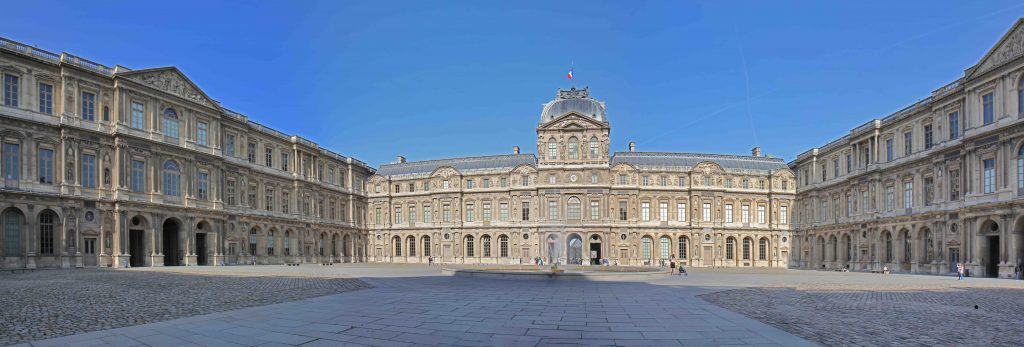
Seen this building before? Now home to Leonardo da Vinci‘s Mona Lisa, the Louvre was once a palace for French kings during the 16th and 17th centuries. It later became a private art museum when French king Louis XVI moved his residence to Versailles. This landmark opened to the public for the first time during the French Revolution. It now bears the name which the authoritative Grand Larousse encyclopédique deems as an association with a wolf hunting den.
White Cliffs of Dover
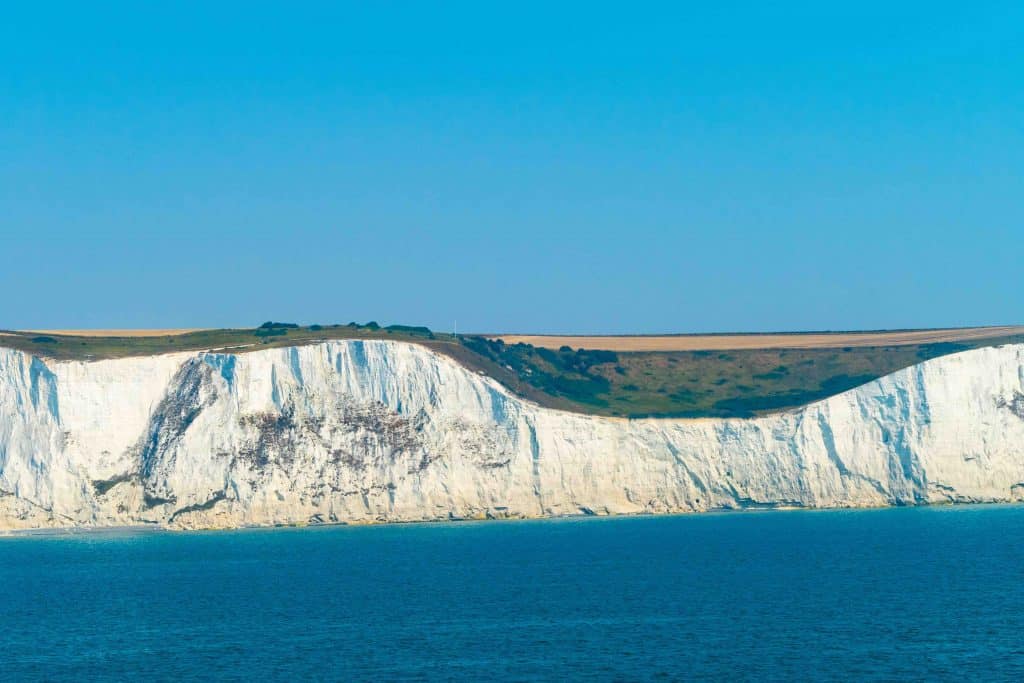
The White Cliffs of Dover features a cliff face that reaches a height of 350 ft. This landmark owes its striking appearance to its composition of chalk accented by streaks of black flint from the Late Cretaceous. Revered as an icon of Britain by The National Trust, the White Cliffs of Dover was once the primary route to the continent before the advent of air travel.
Minaret of Jam
The Minaret of Jam is a UNESCO World Heritage Site in Afghanistan. This landmark lies in a remote region of the Shahrak District, next to the Hari River. Dating back to 1190, the Minaret of Jam towers 65 meters high. It is also famous for its detailed brick, stucco, and glazed tile decorations, which consist of Kufic and Naskhi calligraphy, geometric patterns, and verses from the Qur’an.
Golden Temple of Amritsar

The Golden Temple is a pure 24-karat gold gurdwara located in the city of Amritsar, Punjab. It is the preeminent spiritual site of Sikhism and borders a man-made pool. Furthermore, the 4th Sikh Guru, Guru Ram Das, is the figure who receives credit for constructing this masterpiece in 1577.
The Palace of Parliament
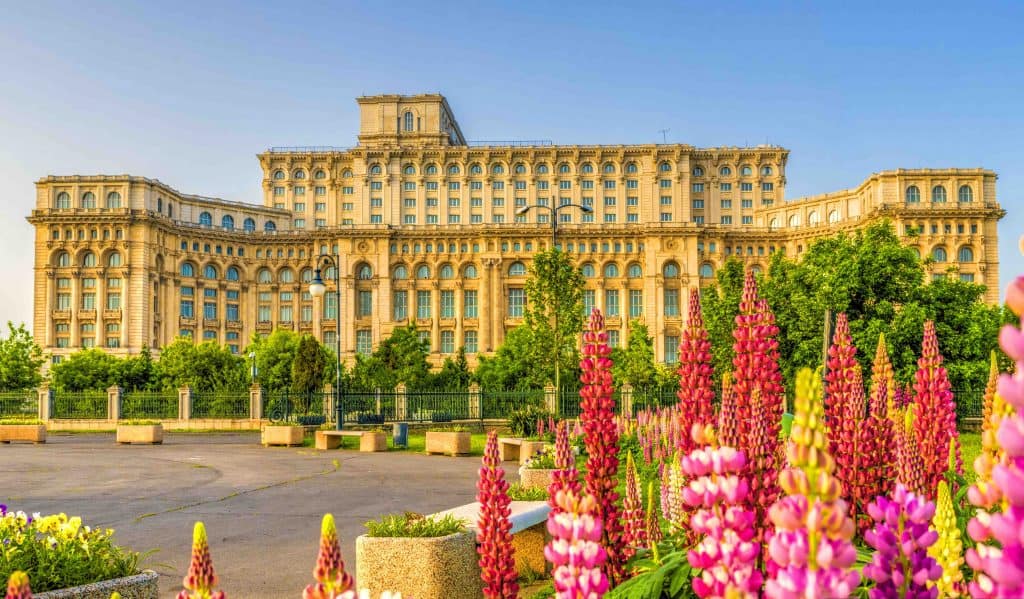
A number of communities also refer to The Palace of the Parliament as the Republic’s House. This landmark houses the seat of Parliament of Romania. Situated atop the national capital, this palace reaches a height of 84 meters and has a floor area of 365,000 square meters. Many believe that this iconic site is the heaviest building in the world. It consists of 700,000 tons of steel and bronze, 350,000 m2 of marble. Additionally, the palace also features 3500 tons of crystal and 900,000 m2 of wood.
Was this page helpful?
Our commitment to delivering trustworthy and engaging content is at the heart of what we do. Each fact on our site is contributed by real users like you, bringing a wealth of diverse insights and information. To ensure the highest standards of accuracy and reliability, our dedicated editors meticulously review each submission. This process guarantees that the facts we share are not only fascinating but also credible. Trust in our commitment to quality and authenticity as you explore and learn with us.
